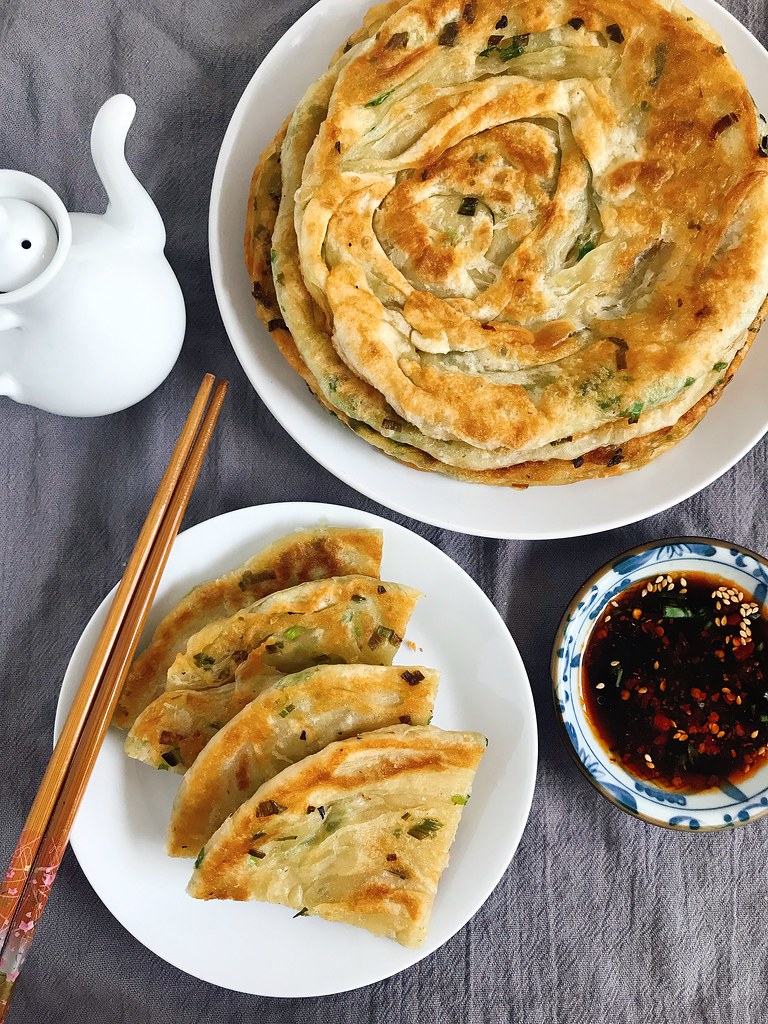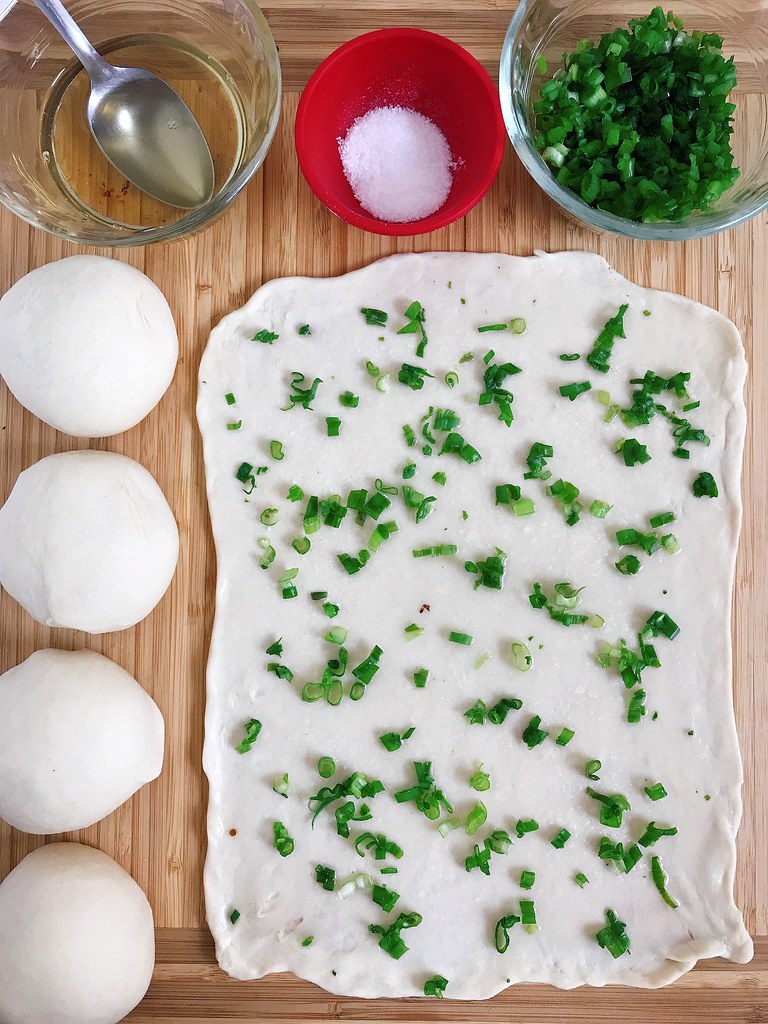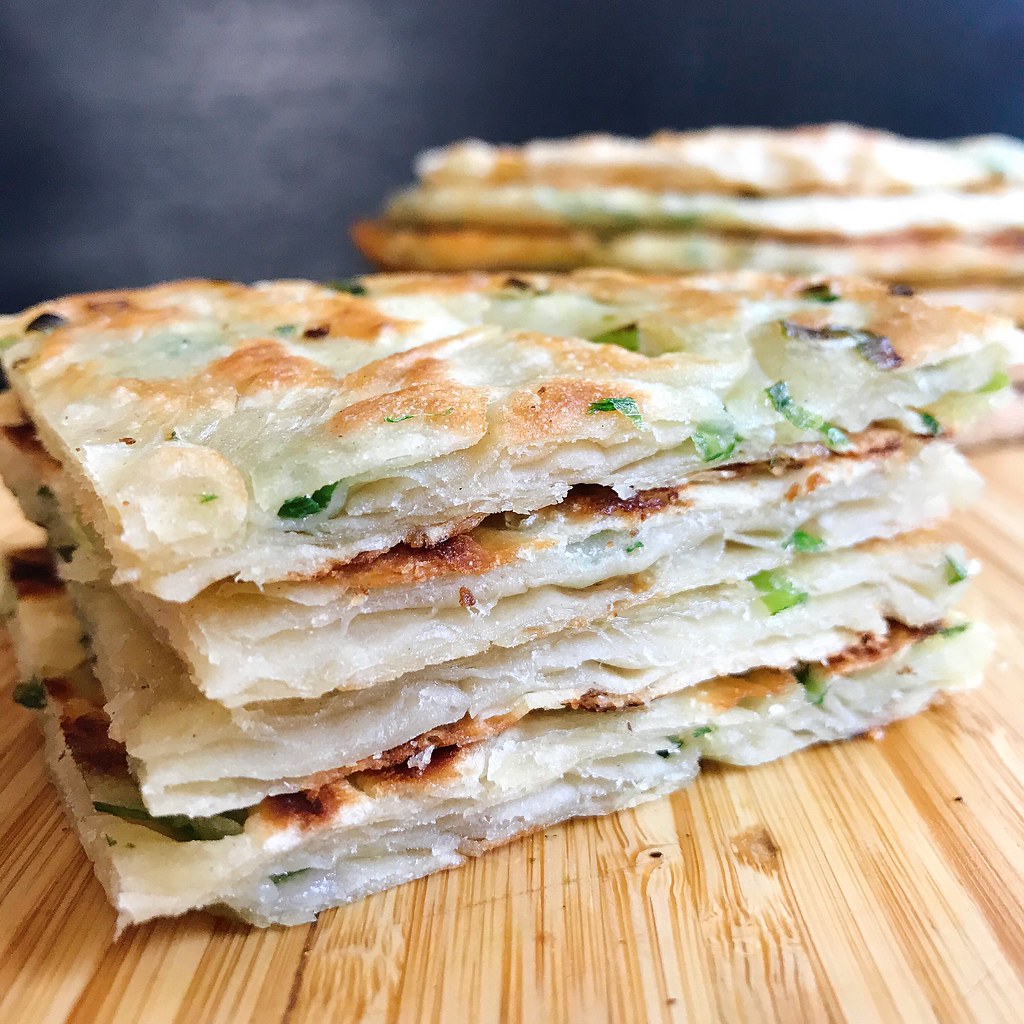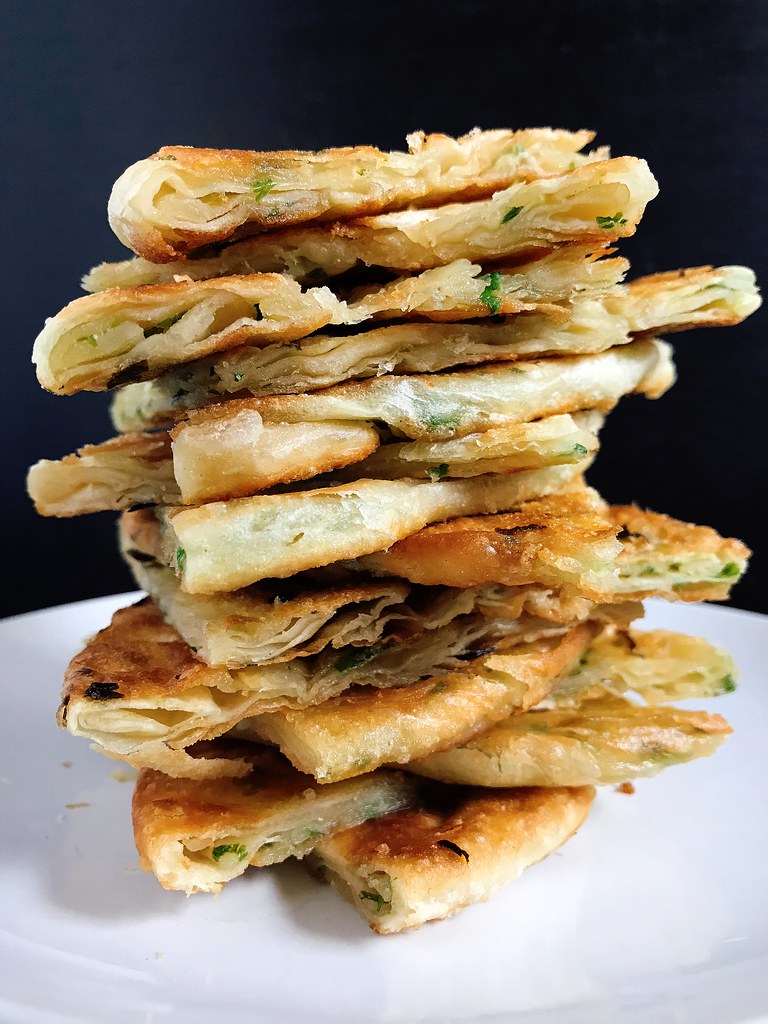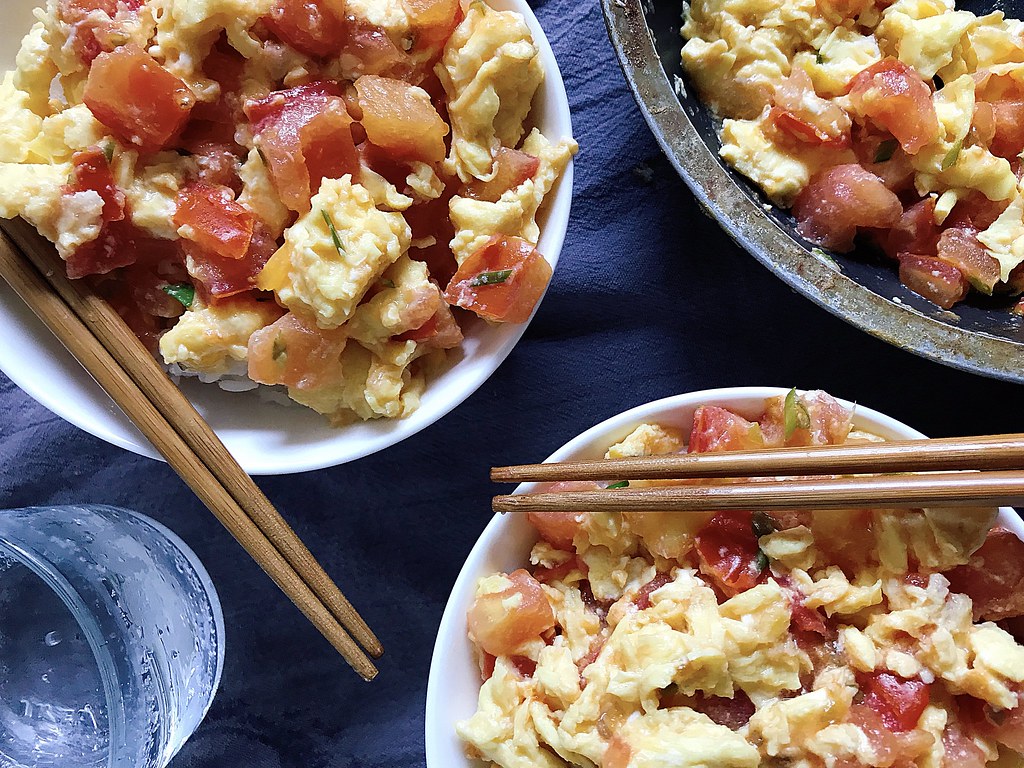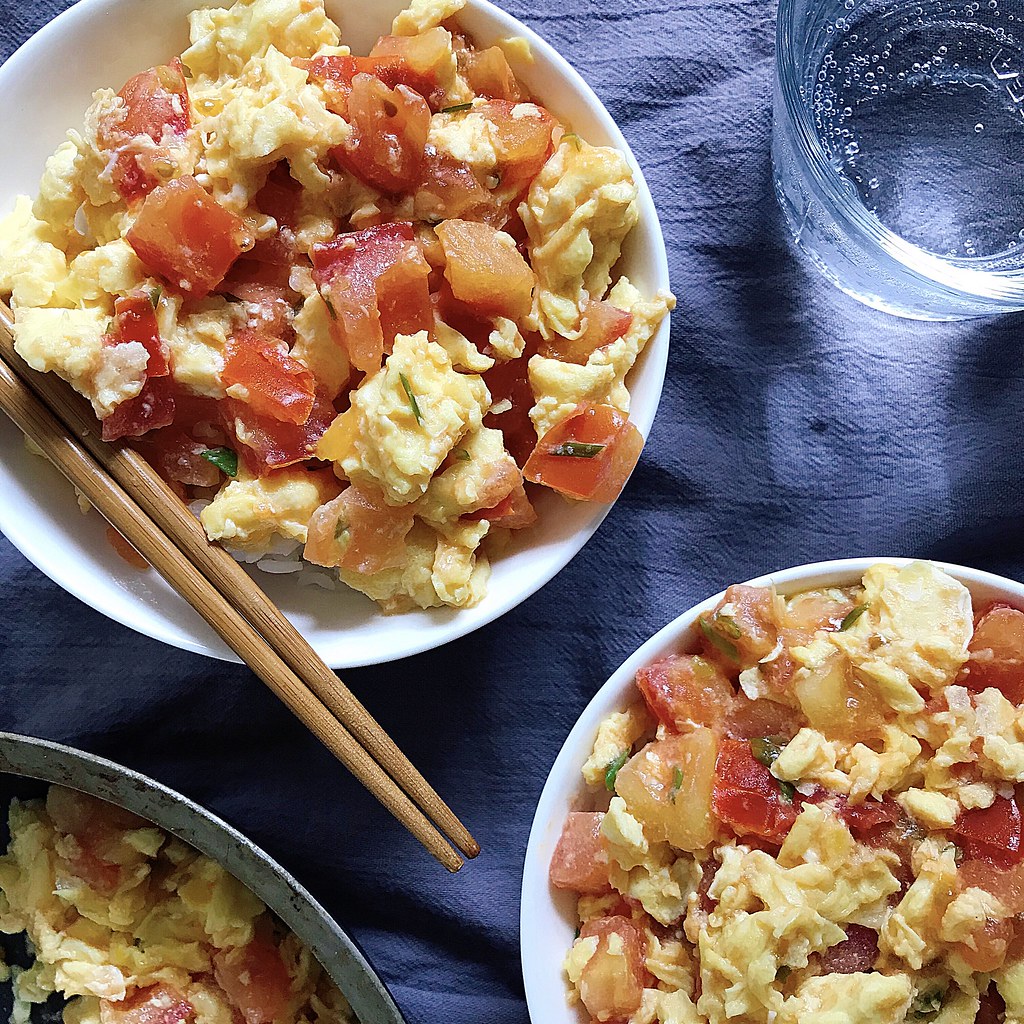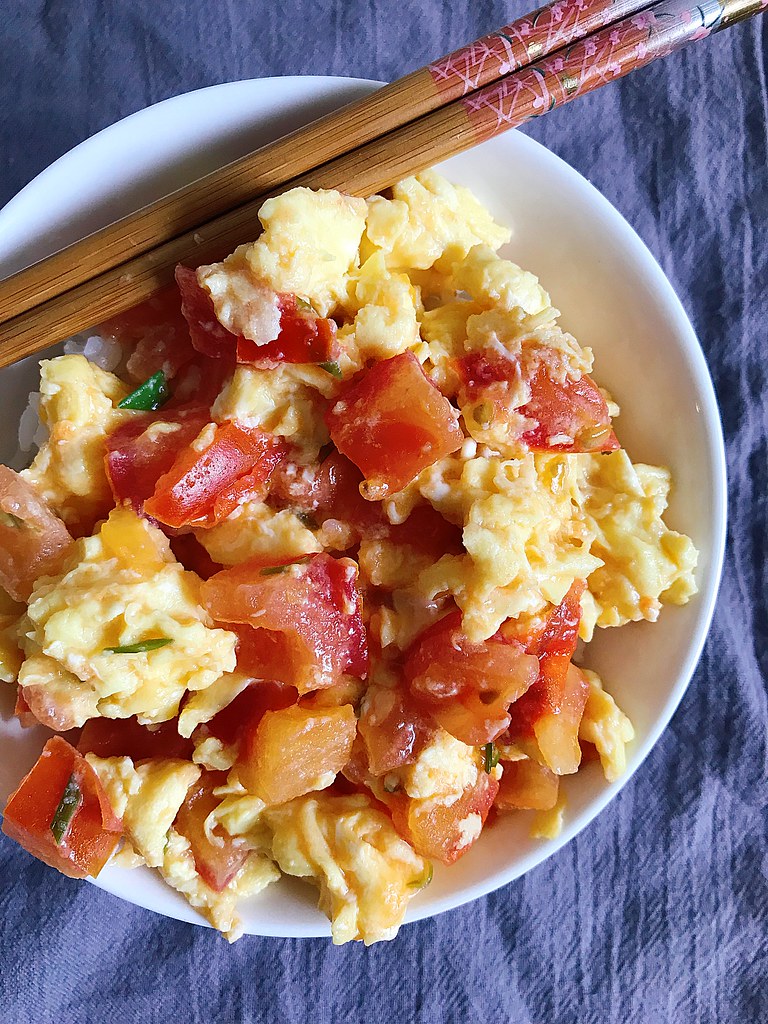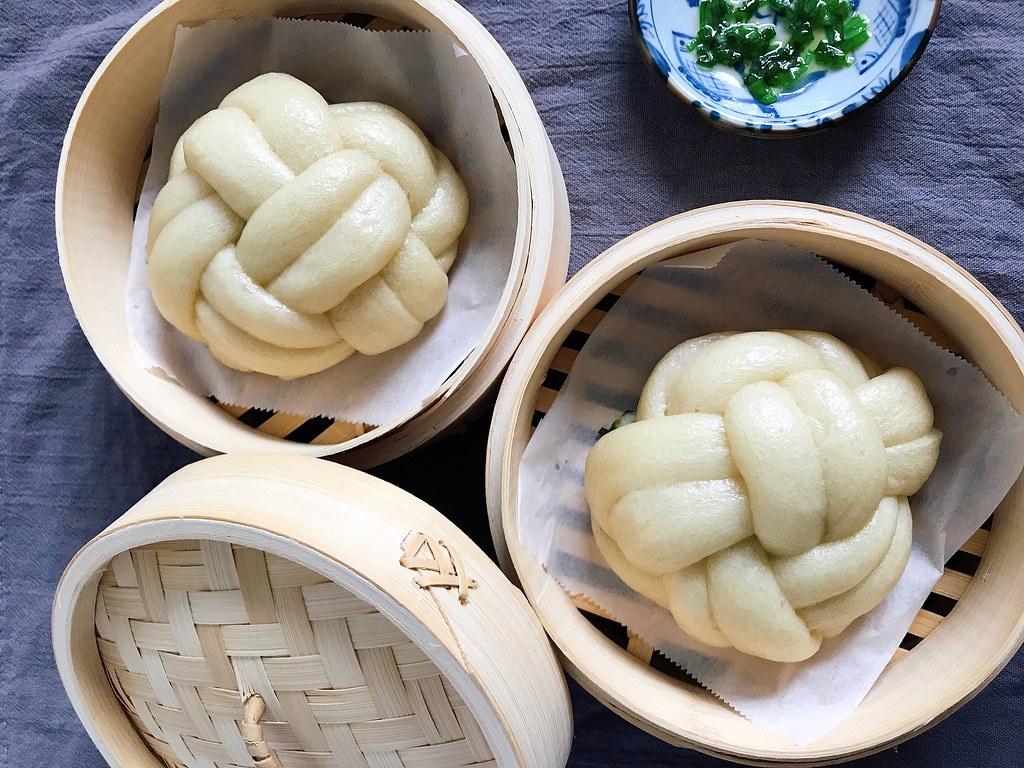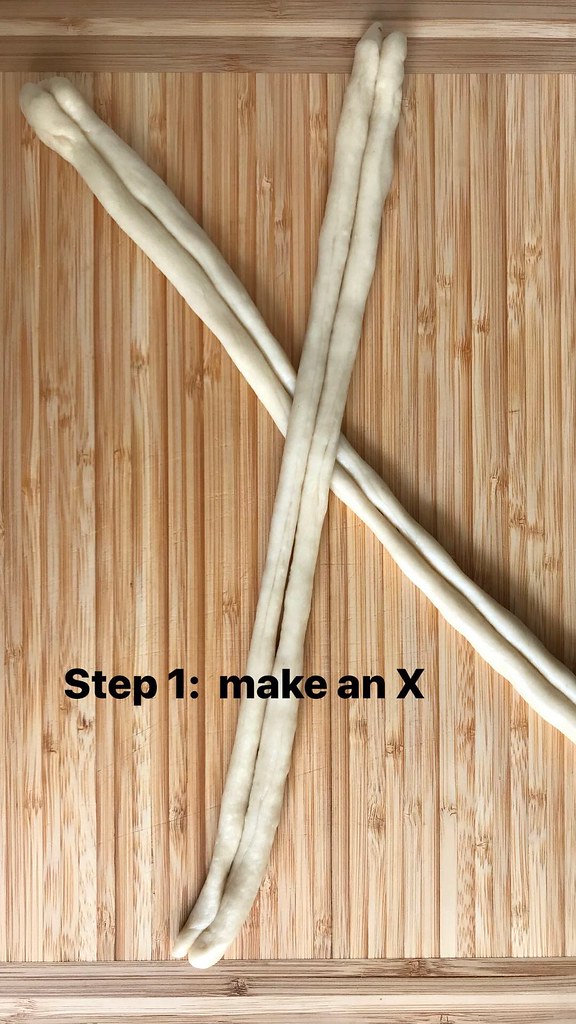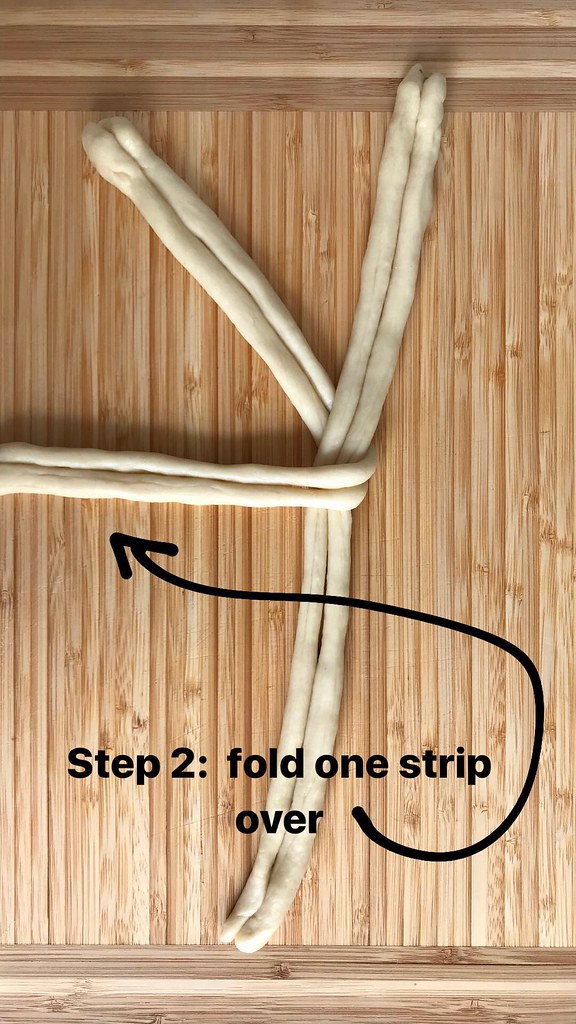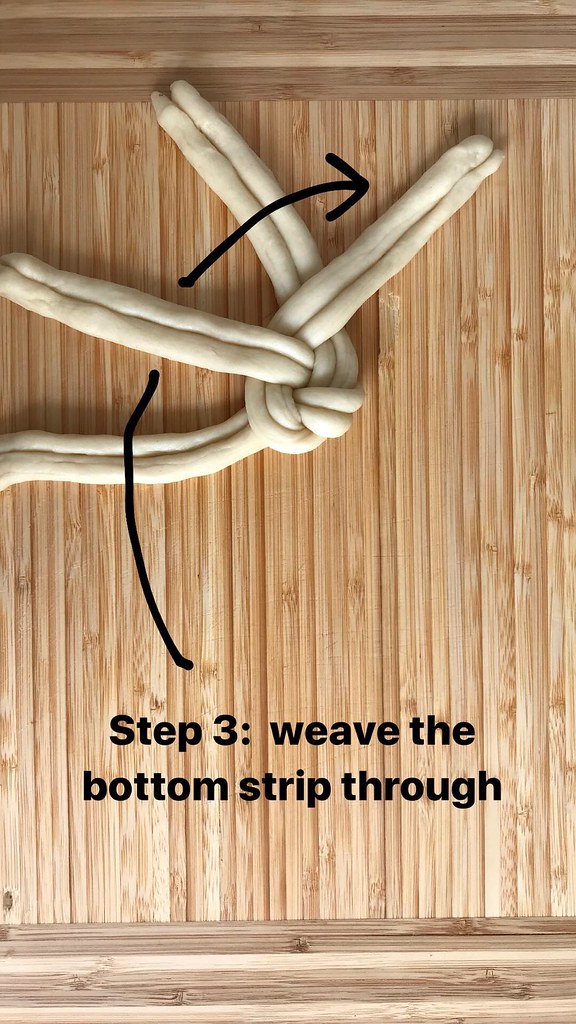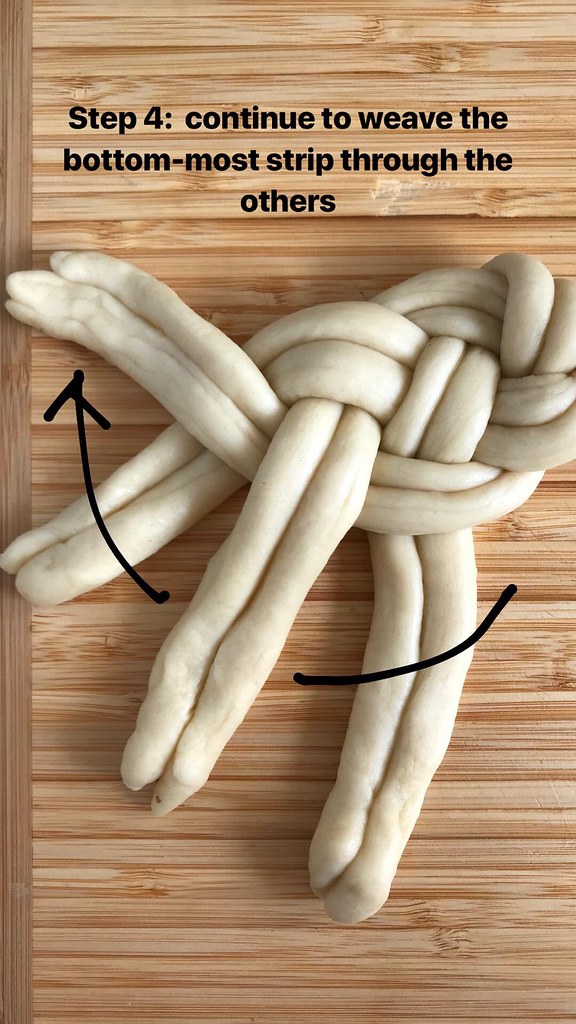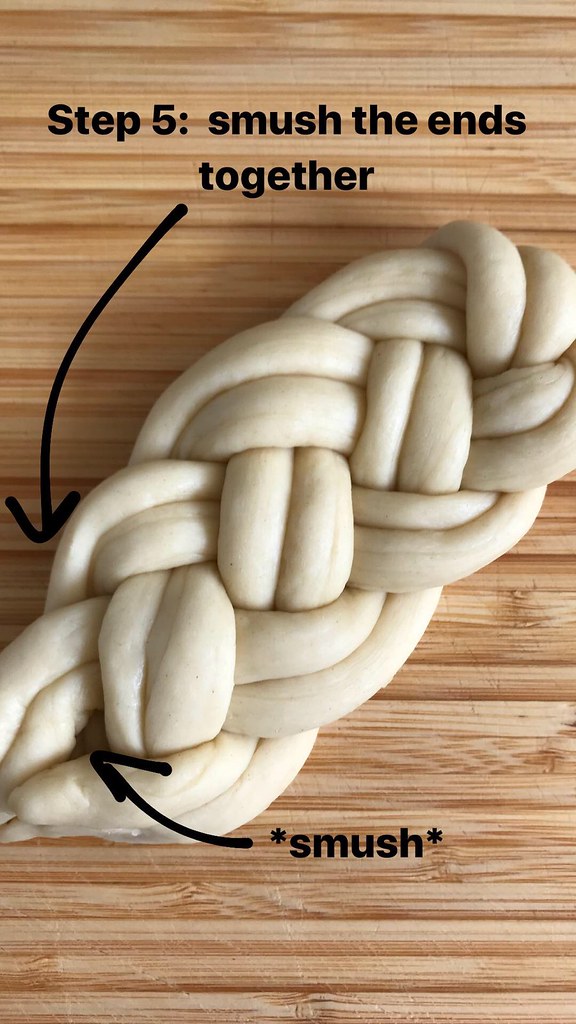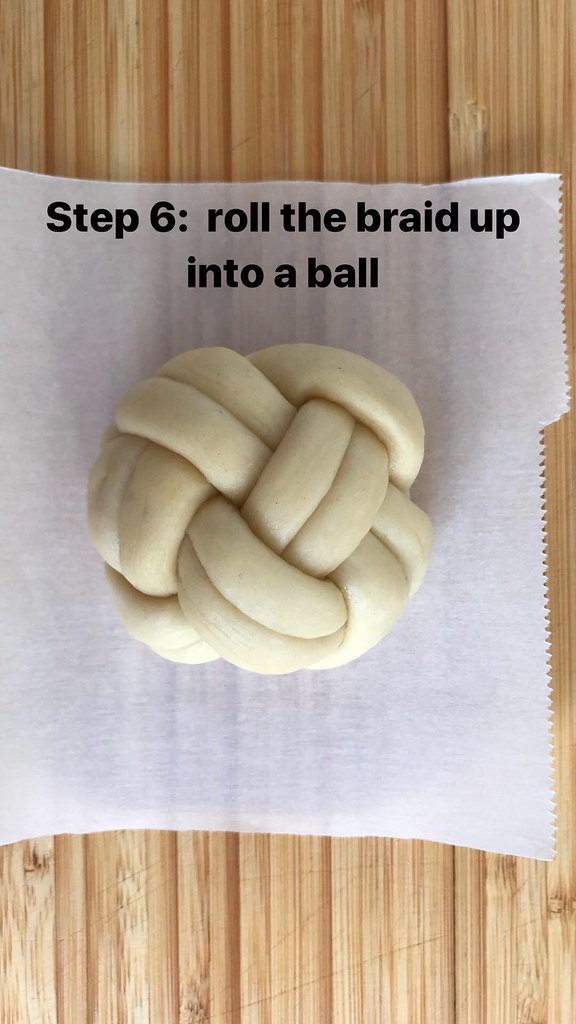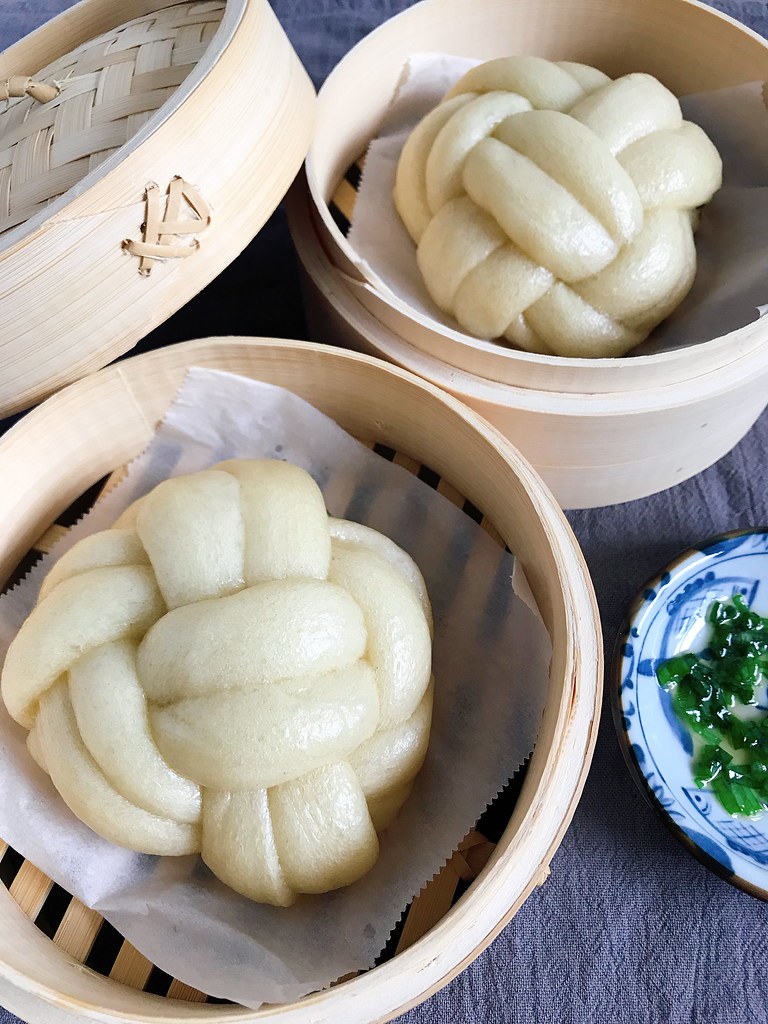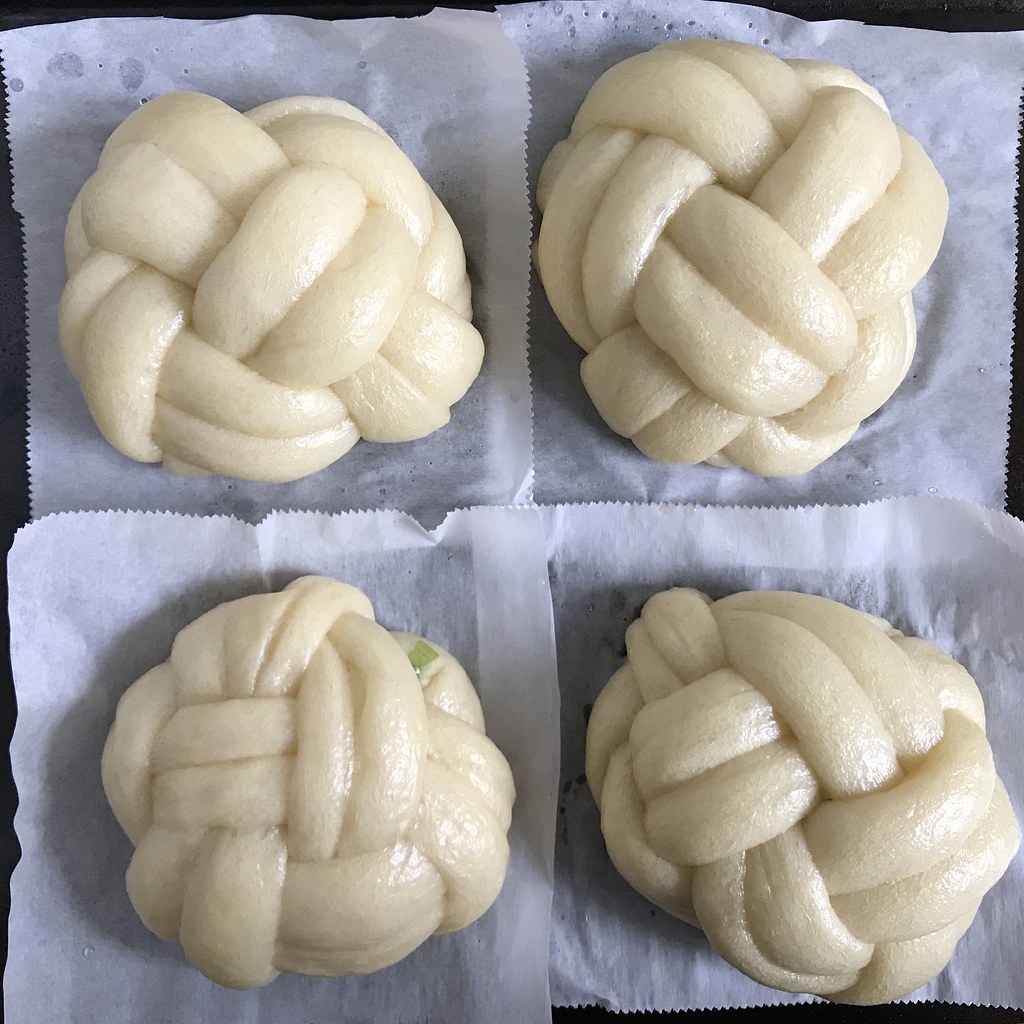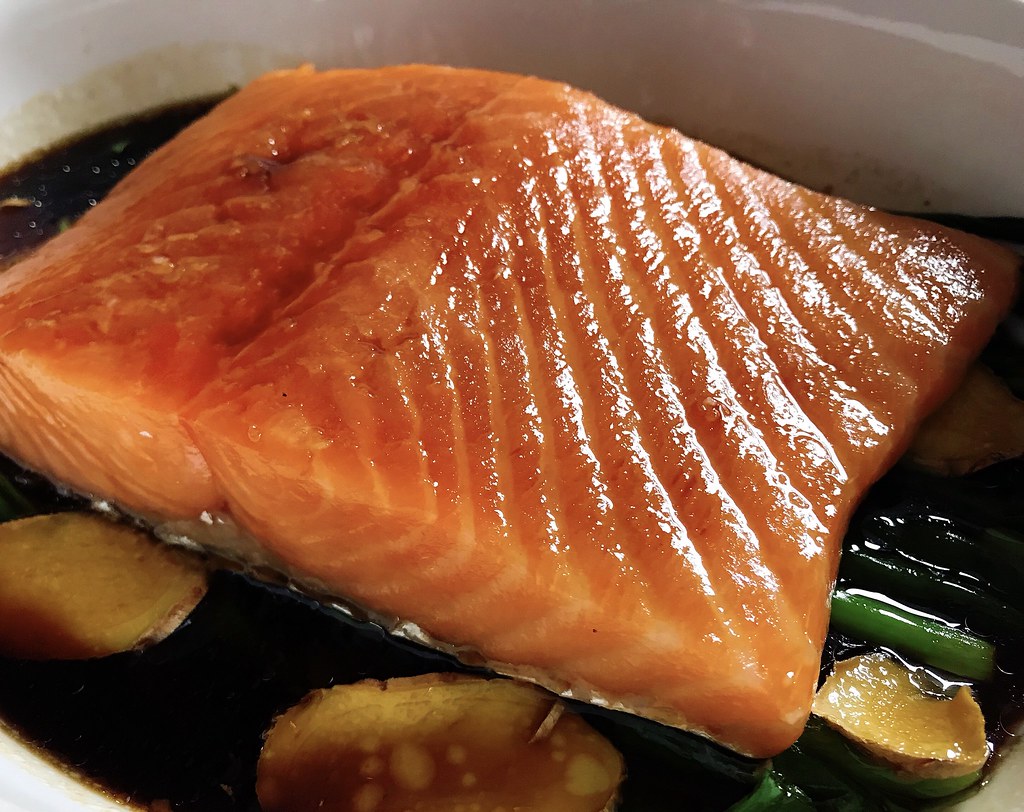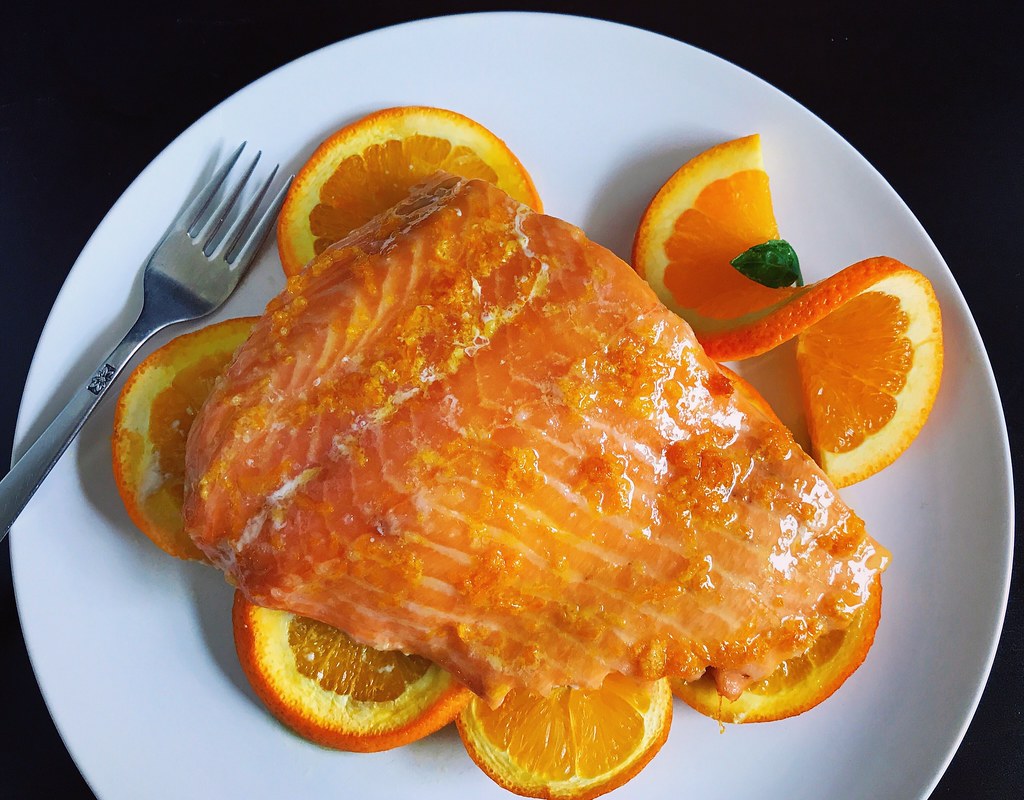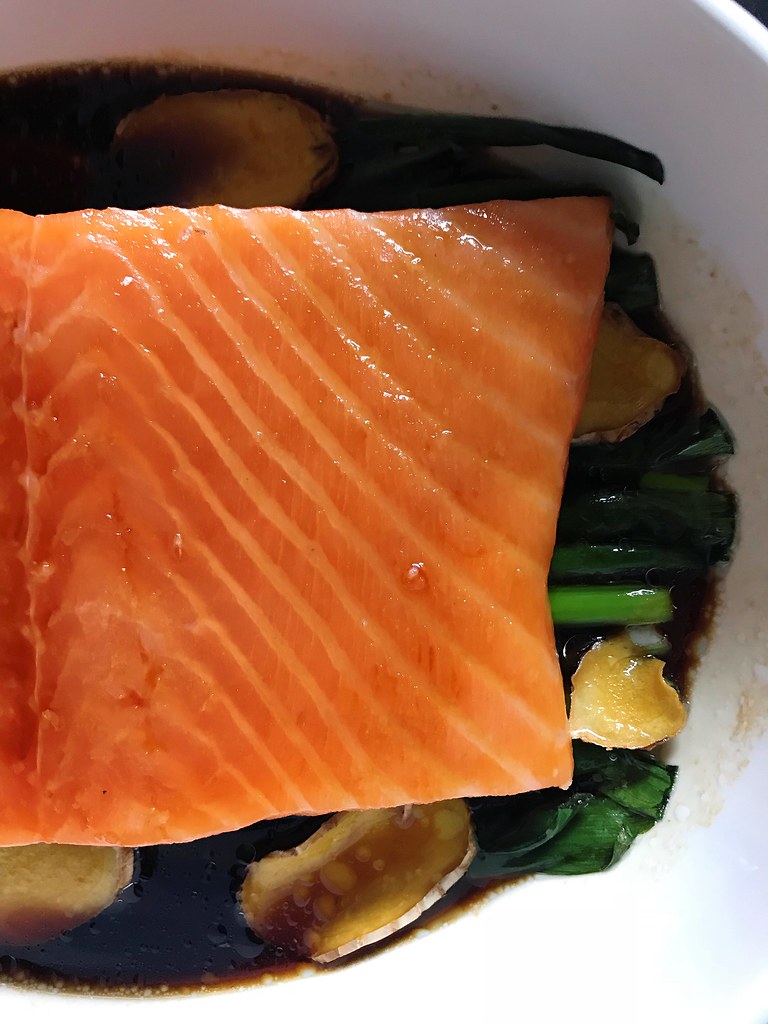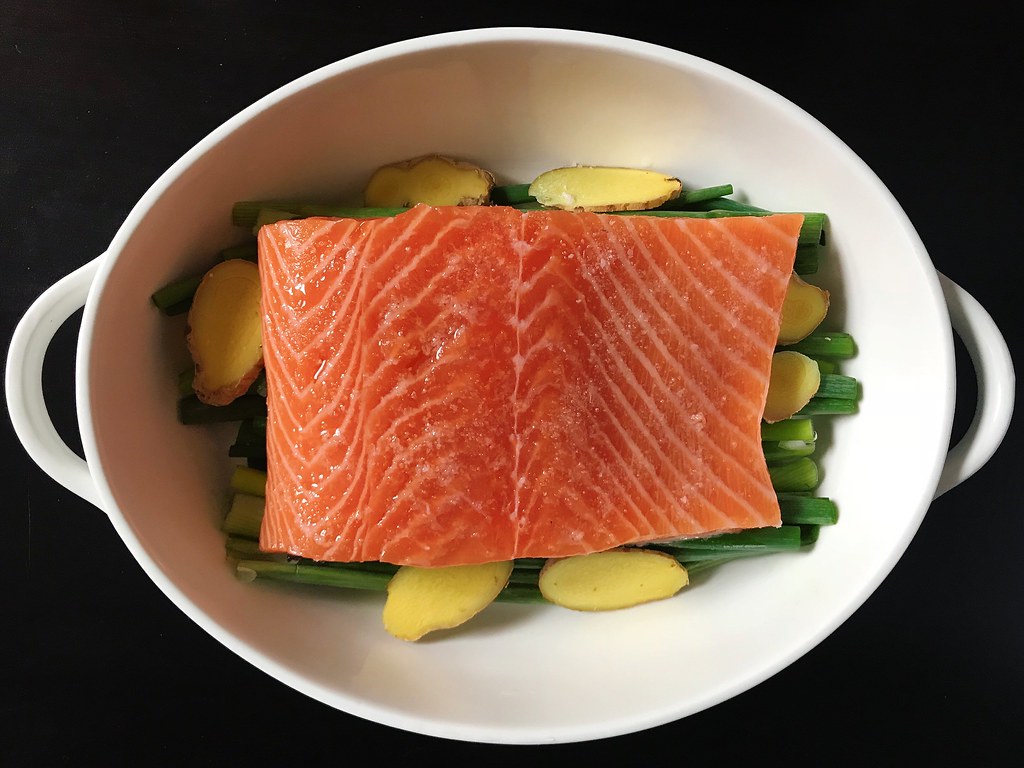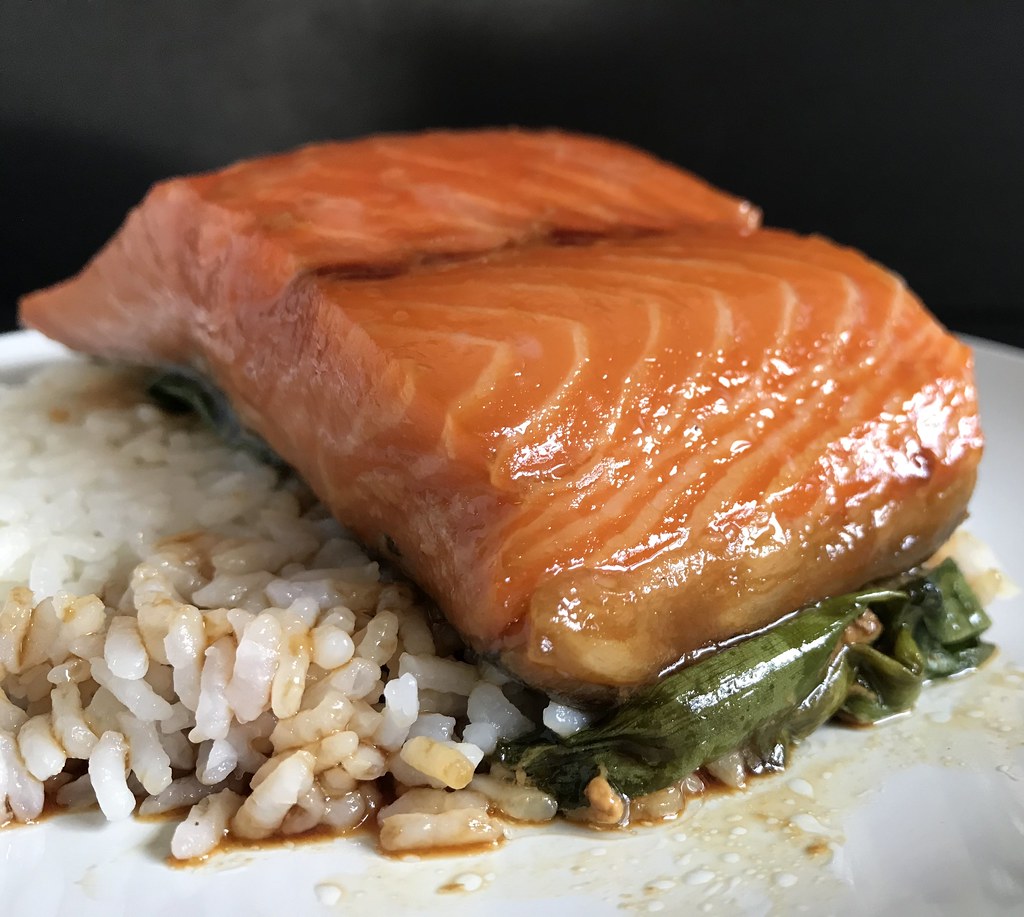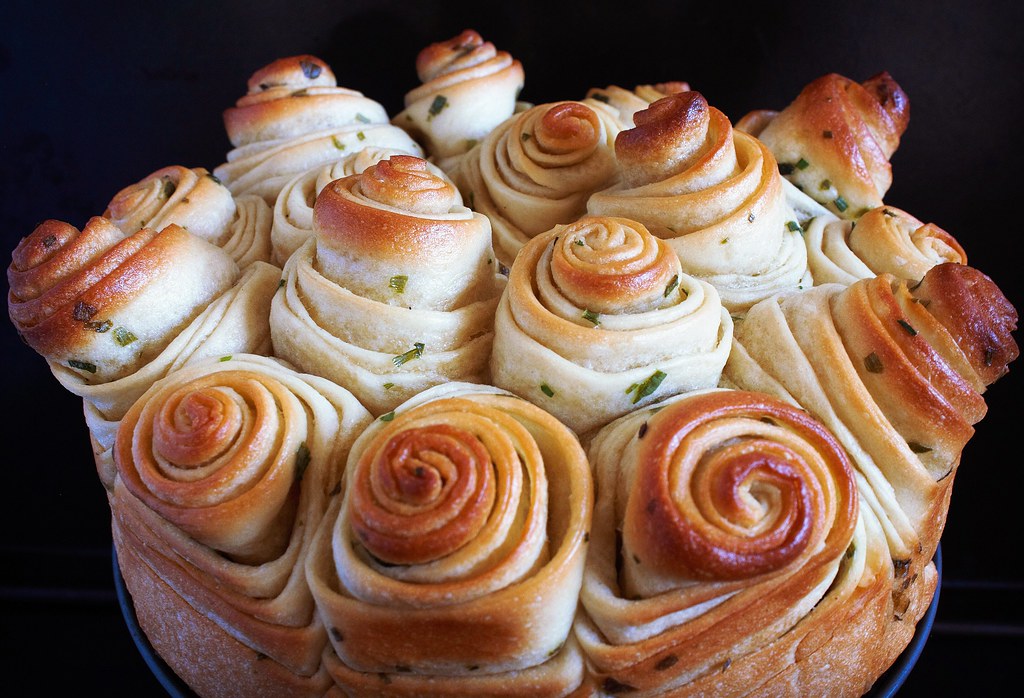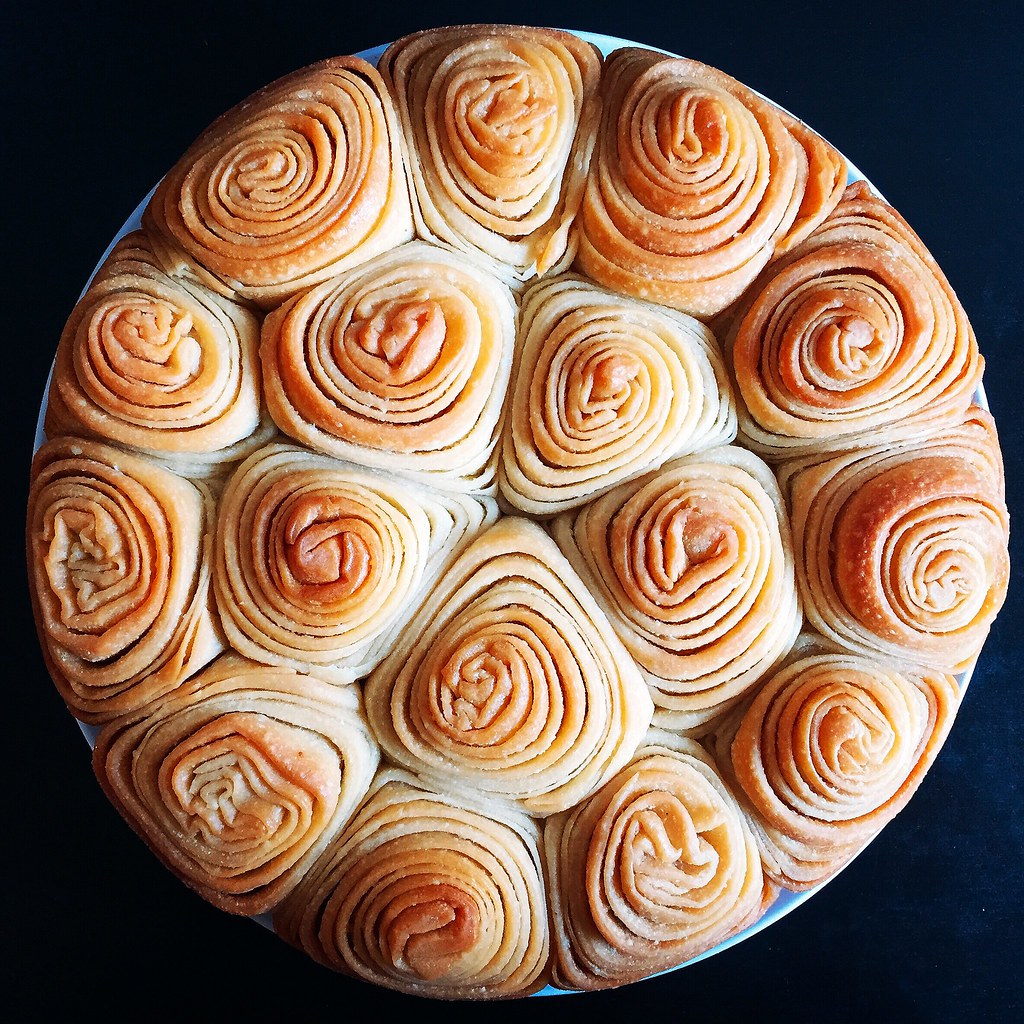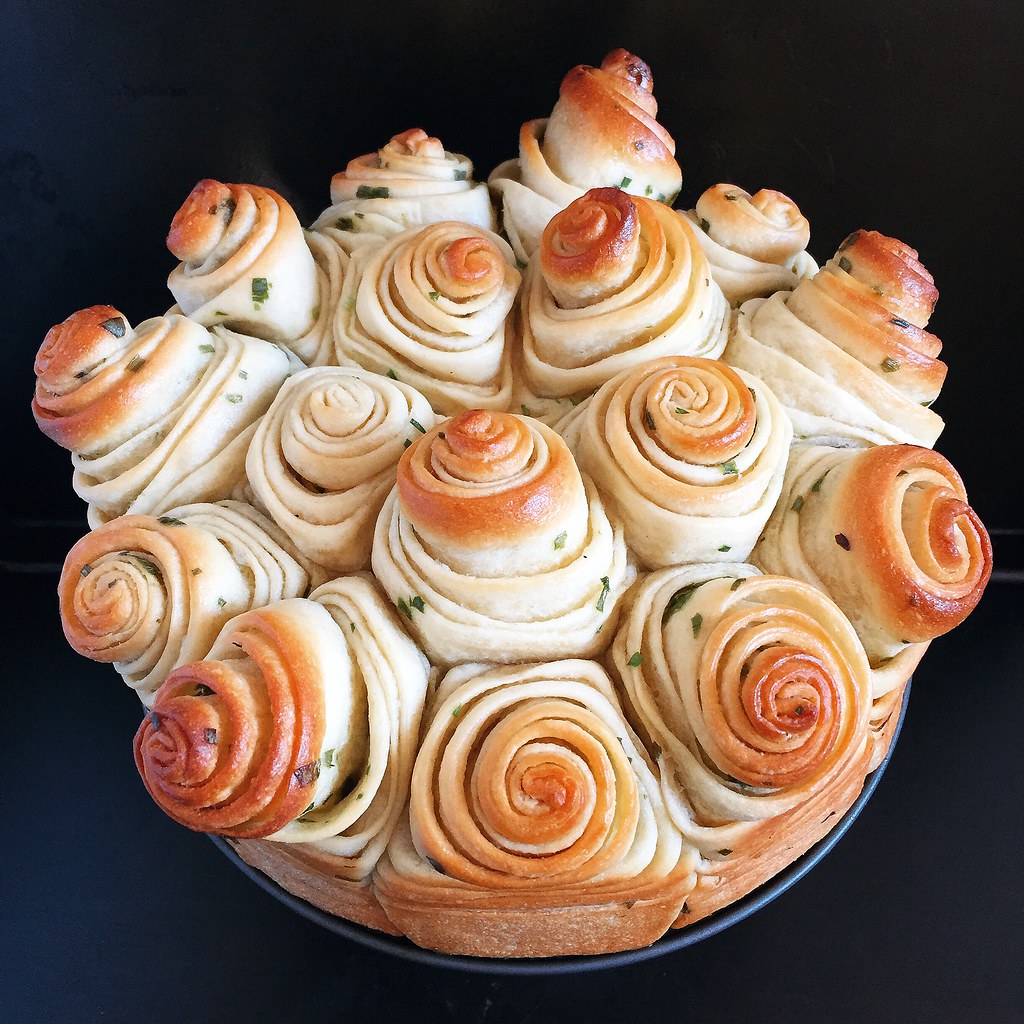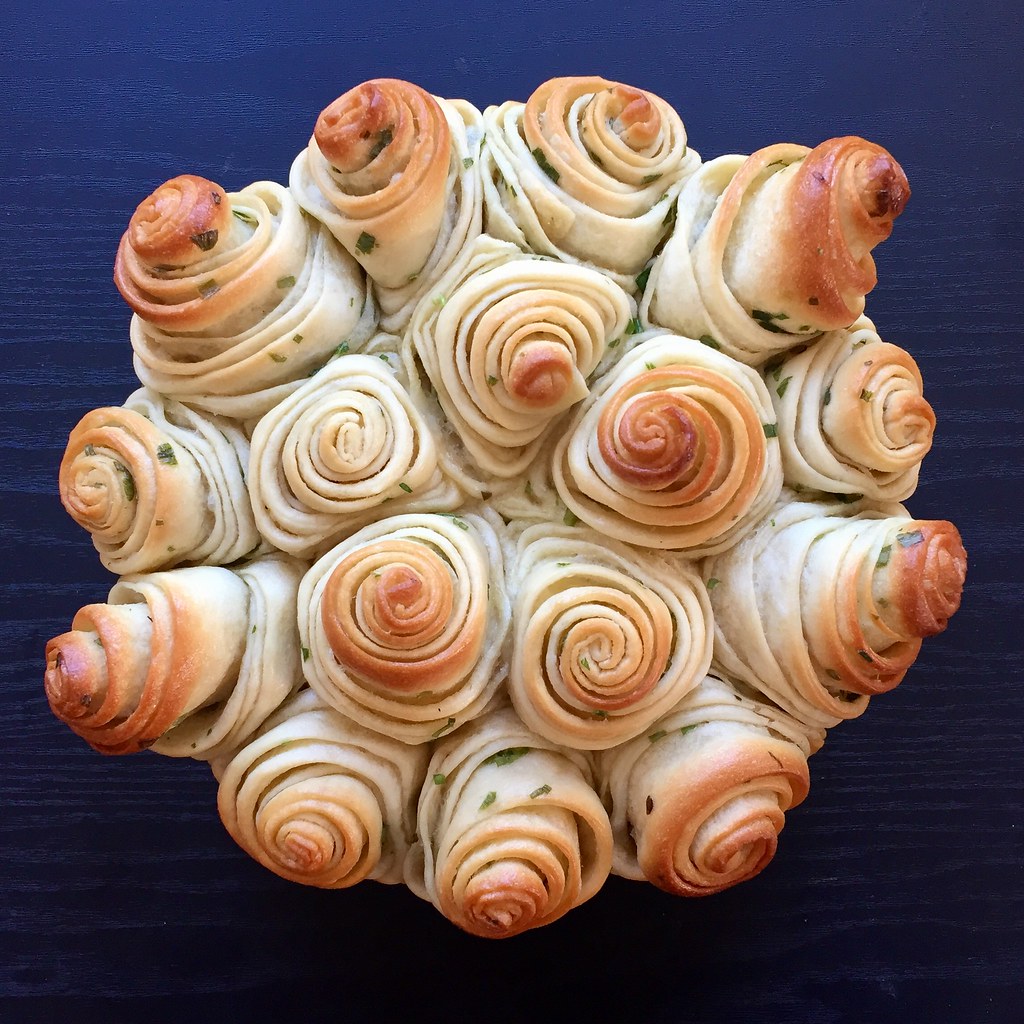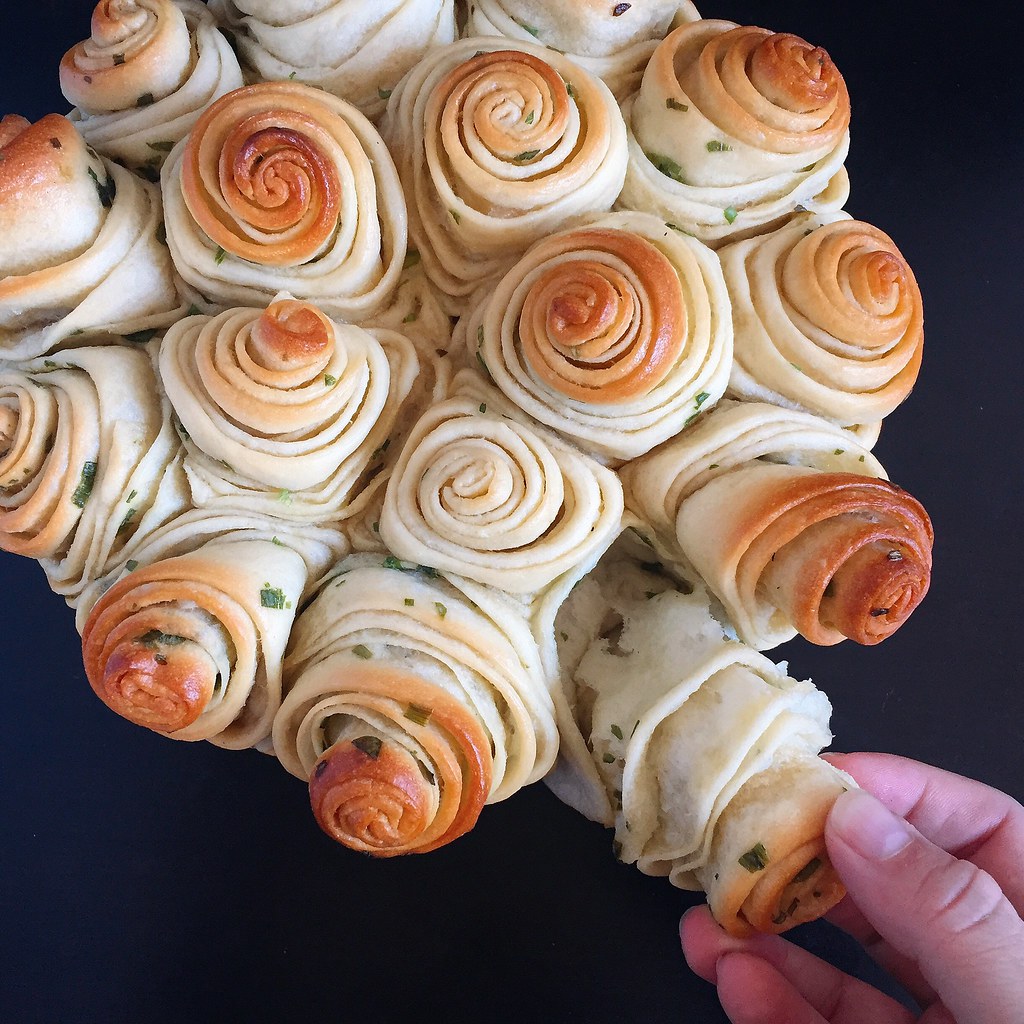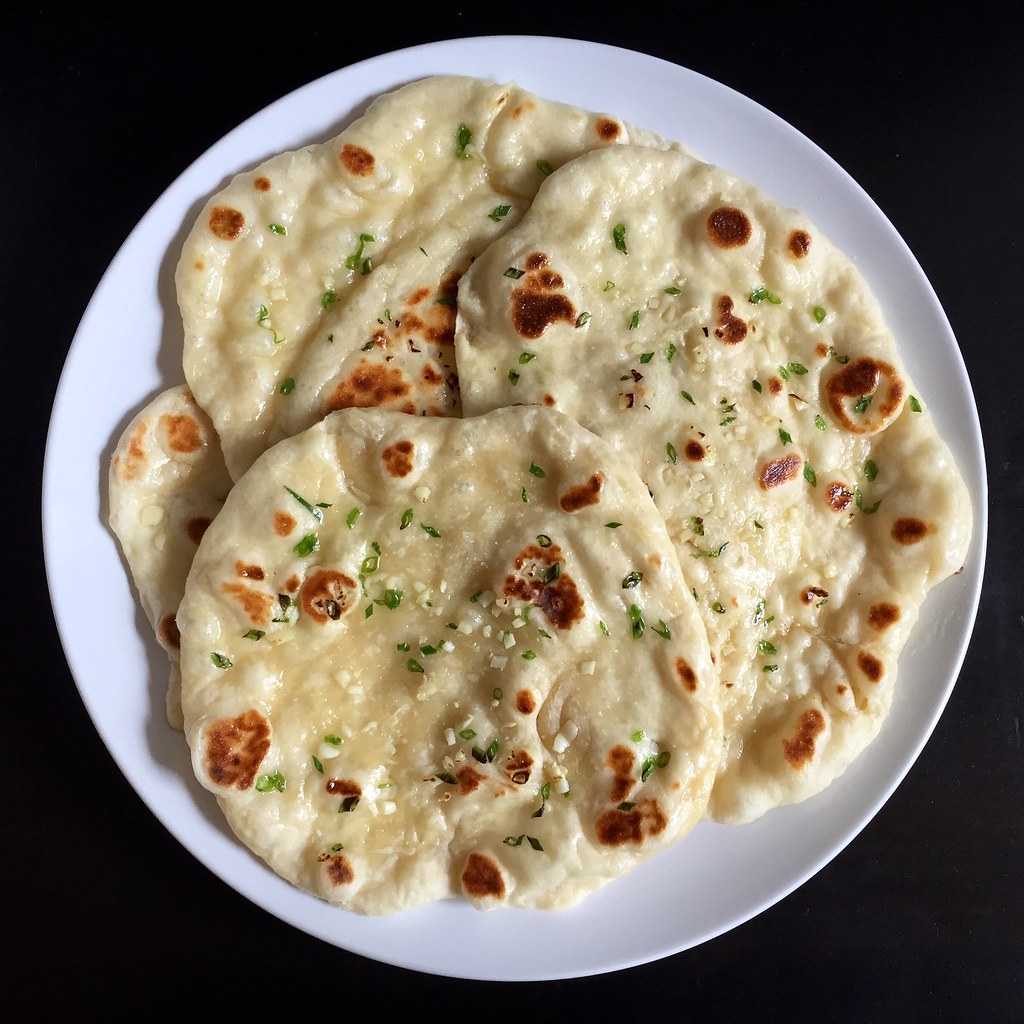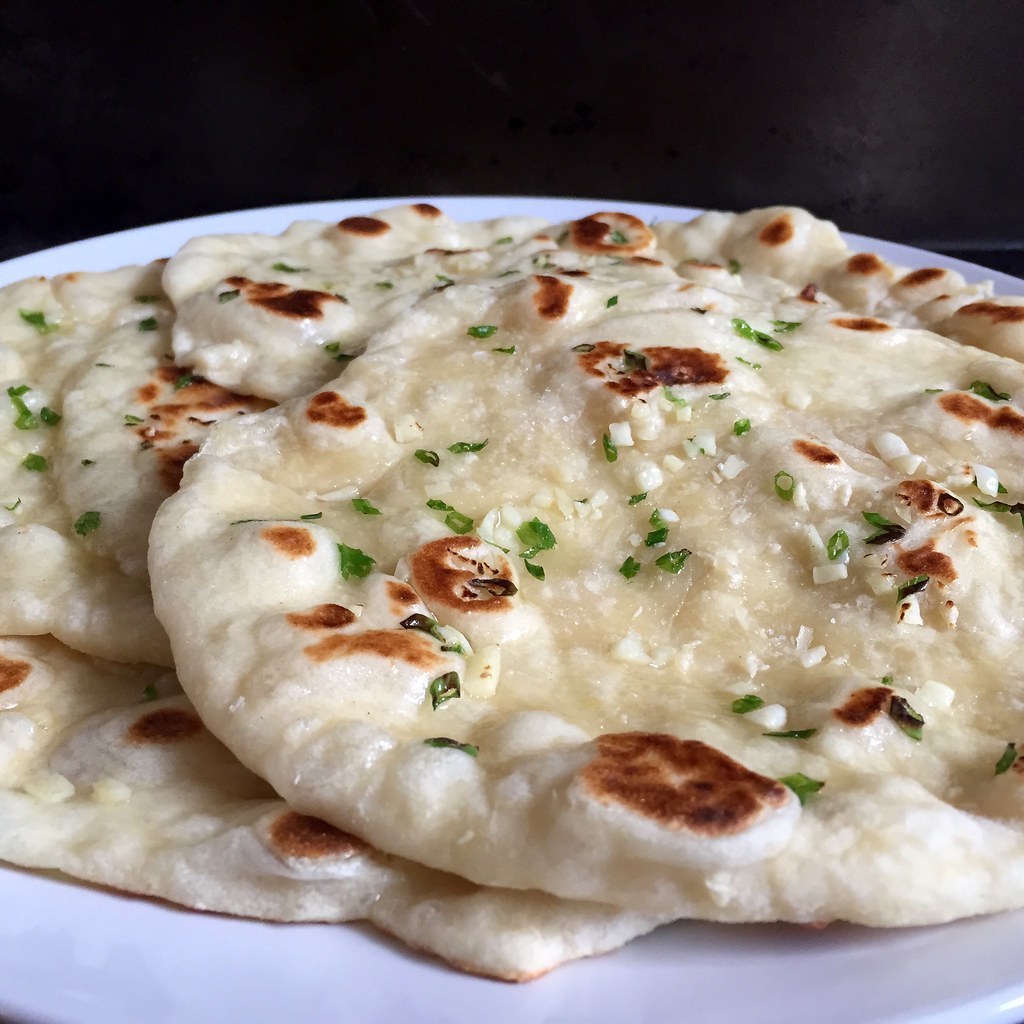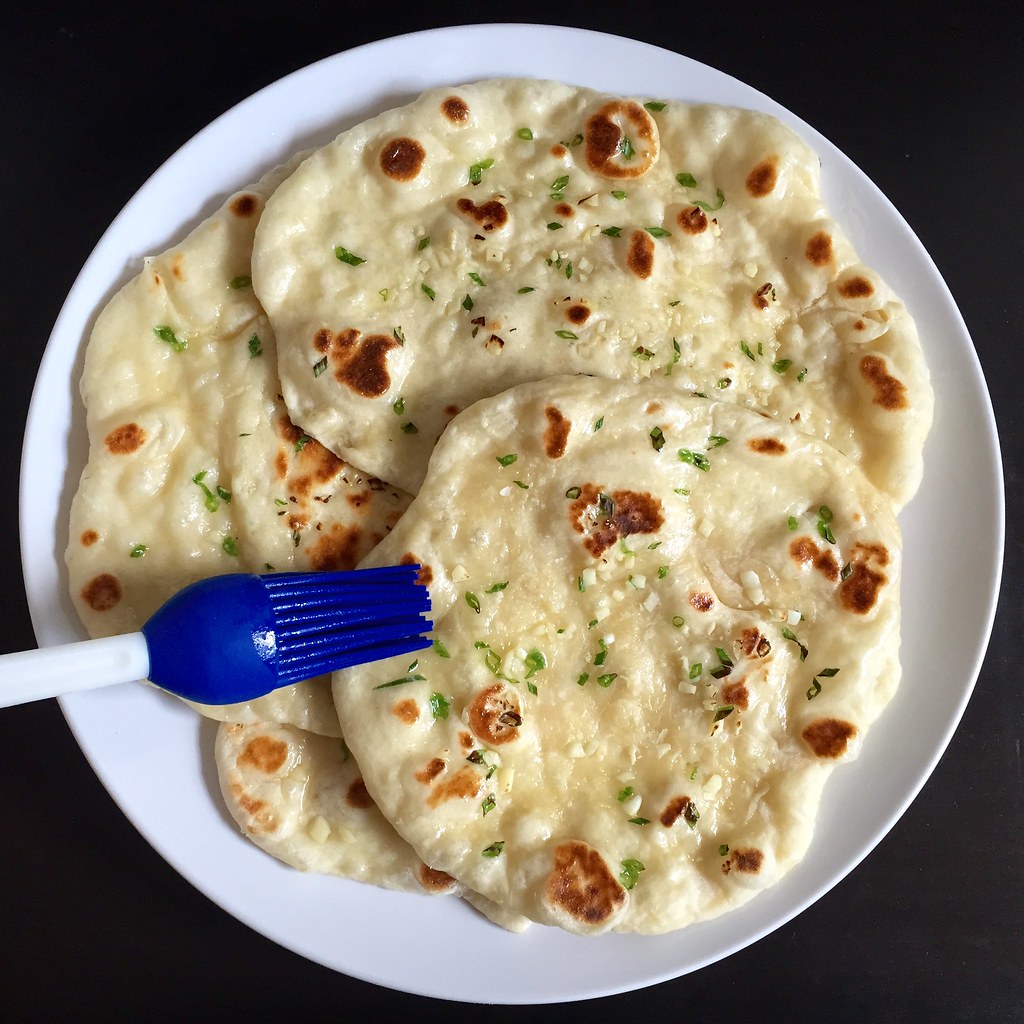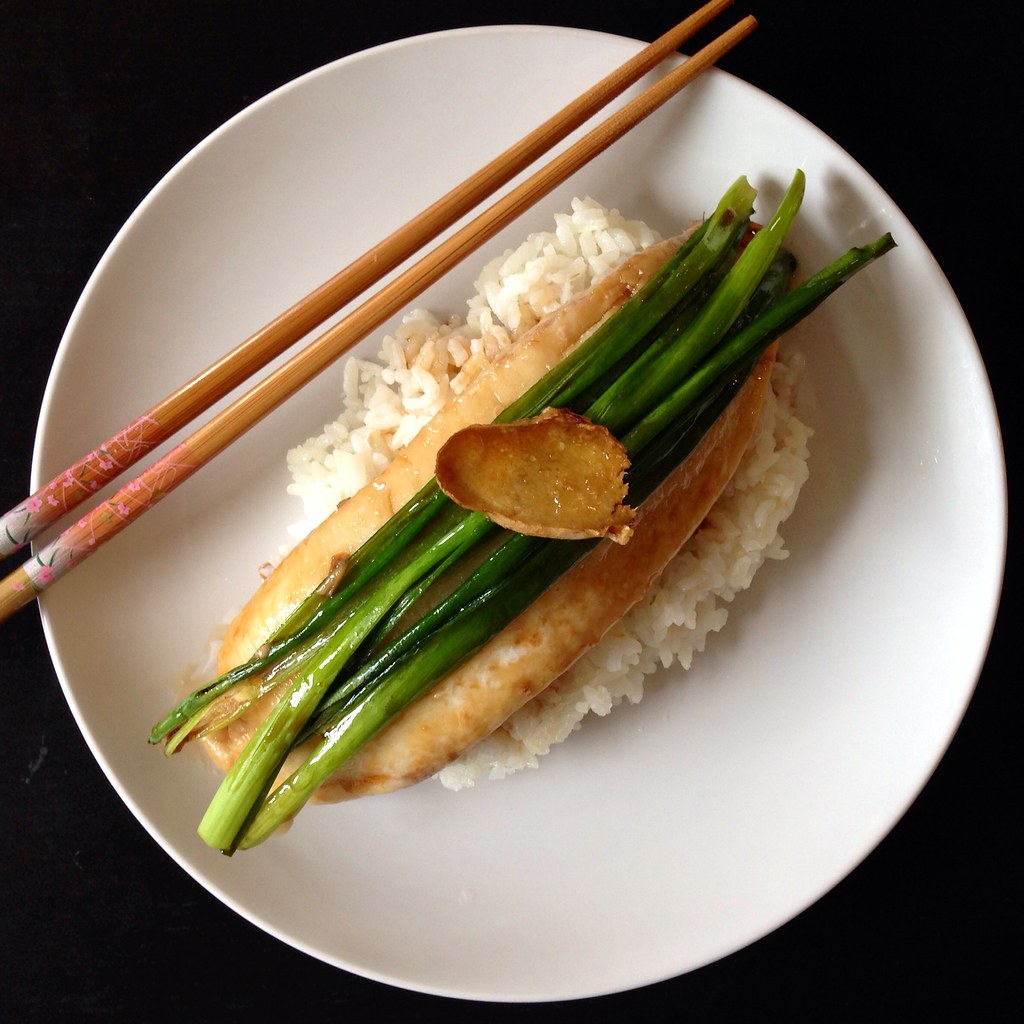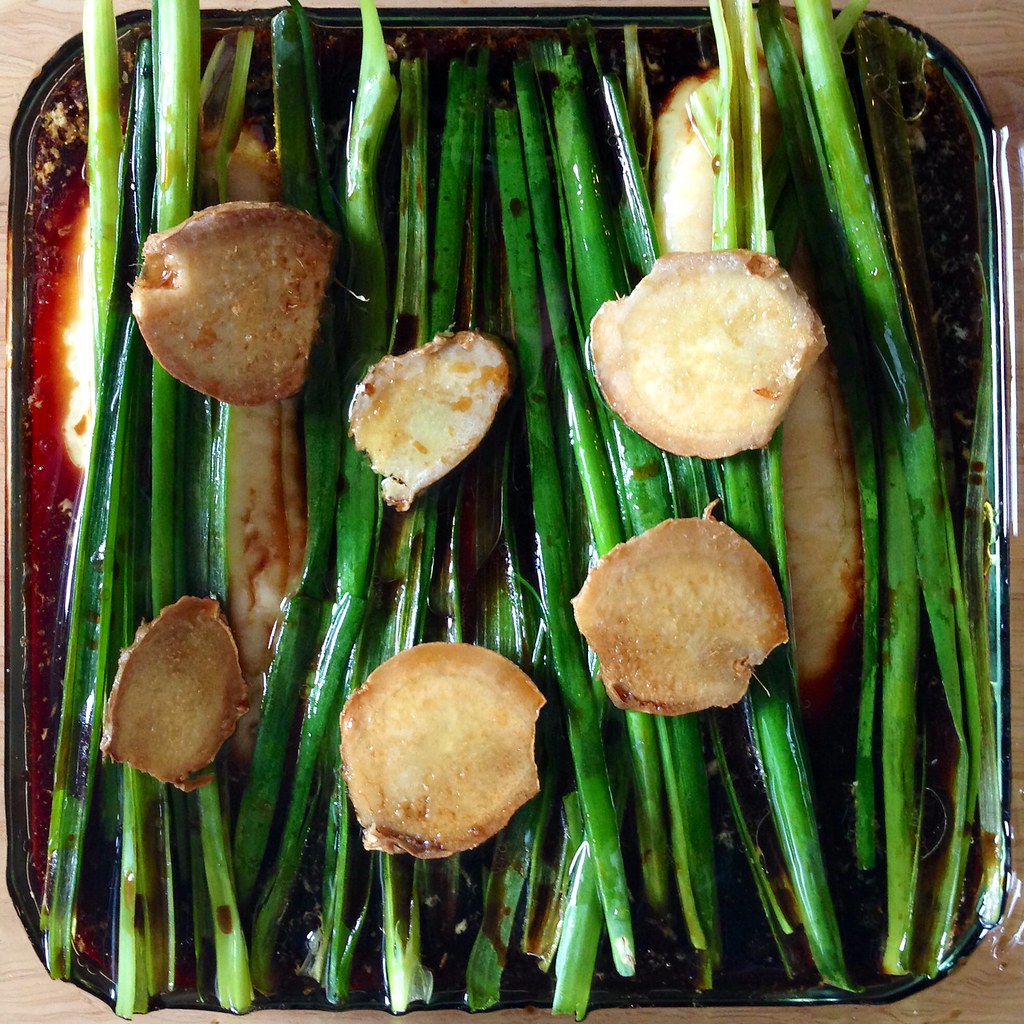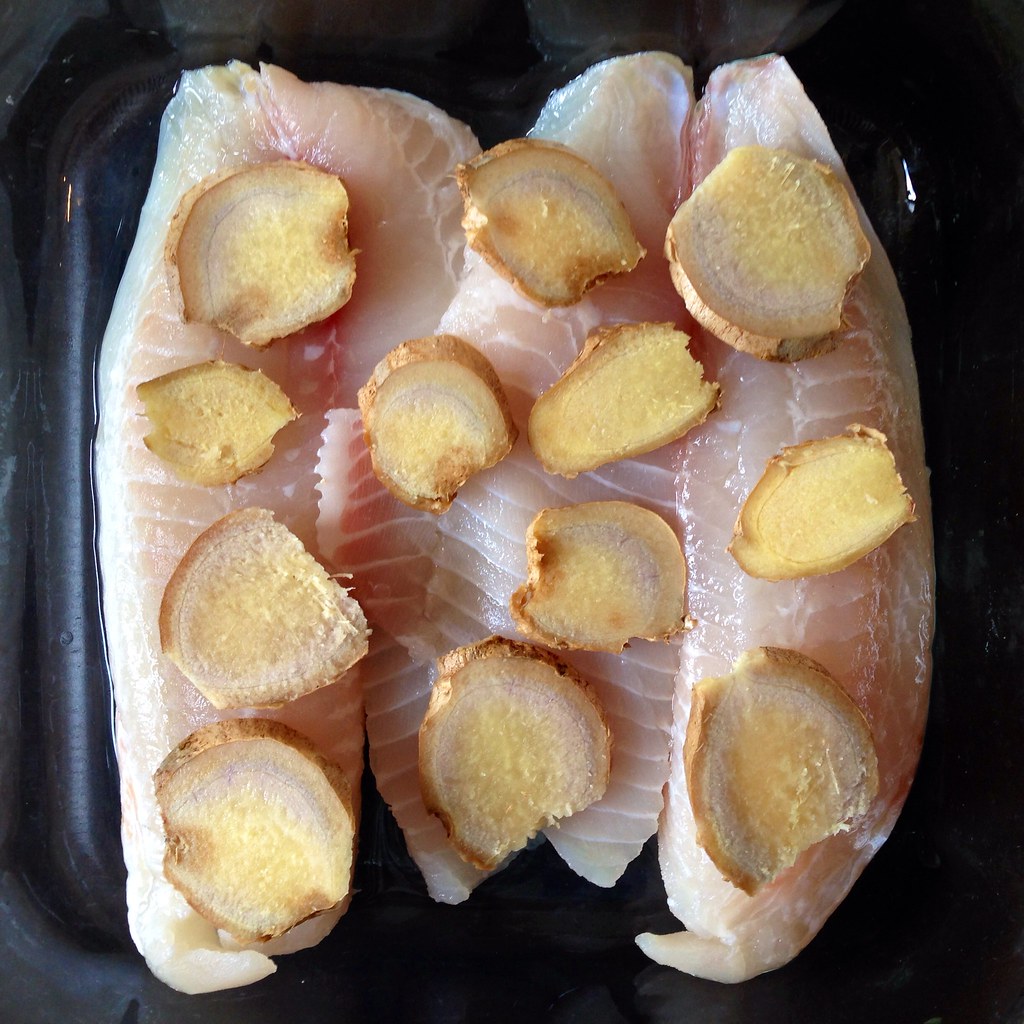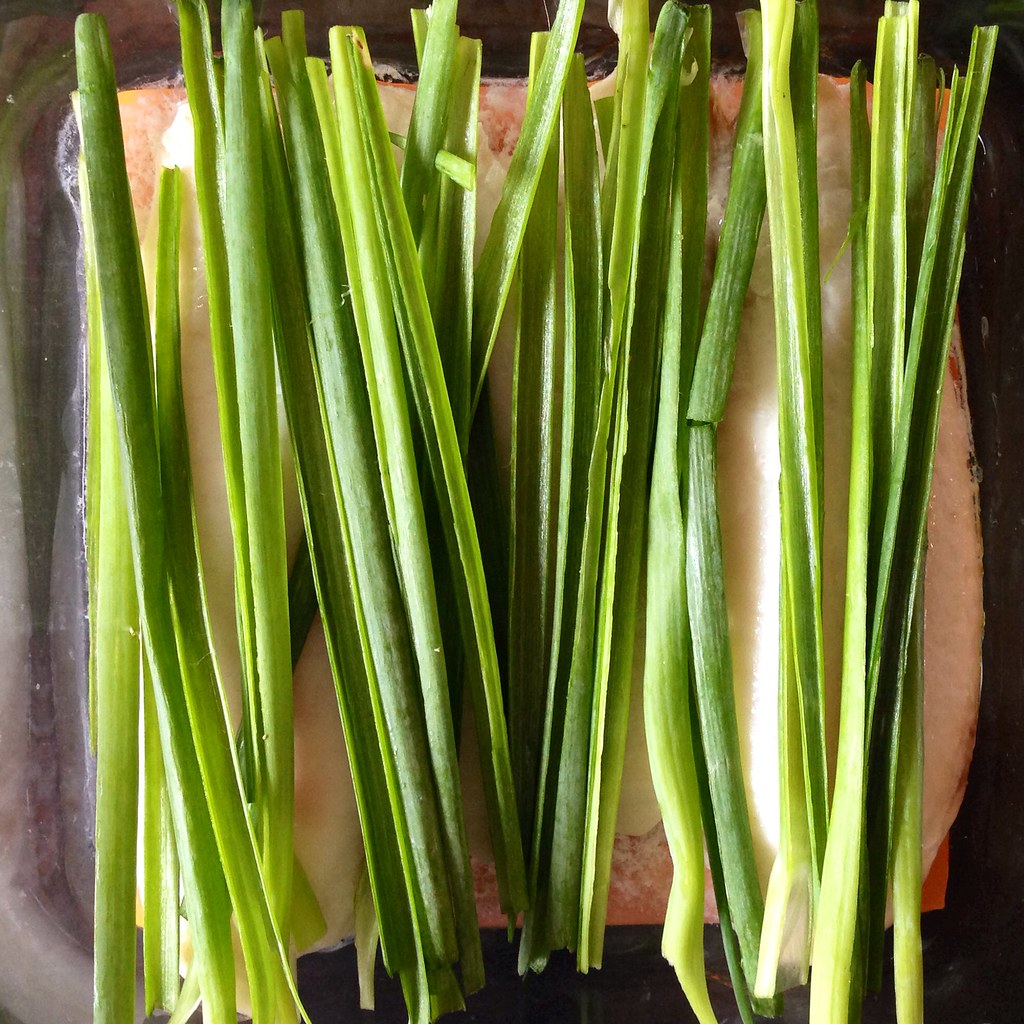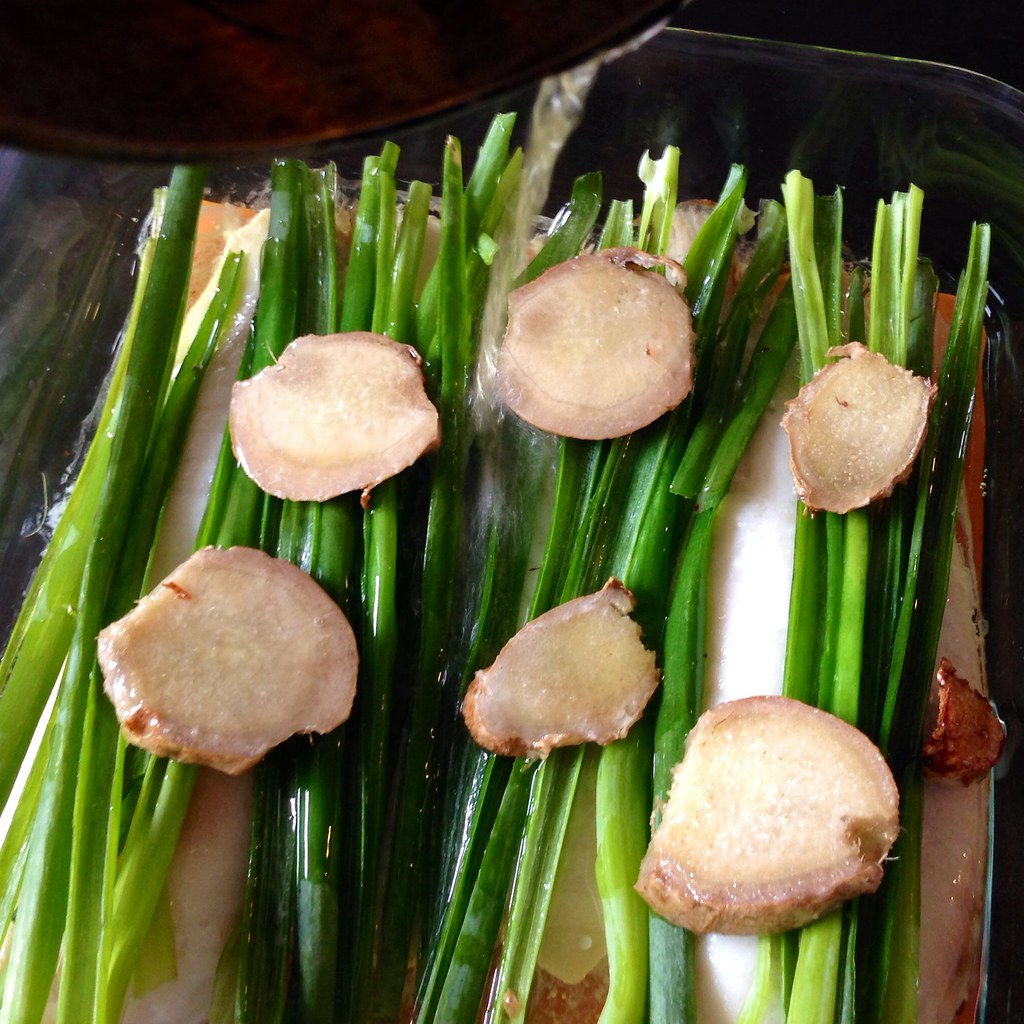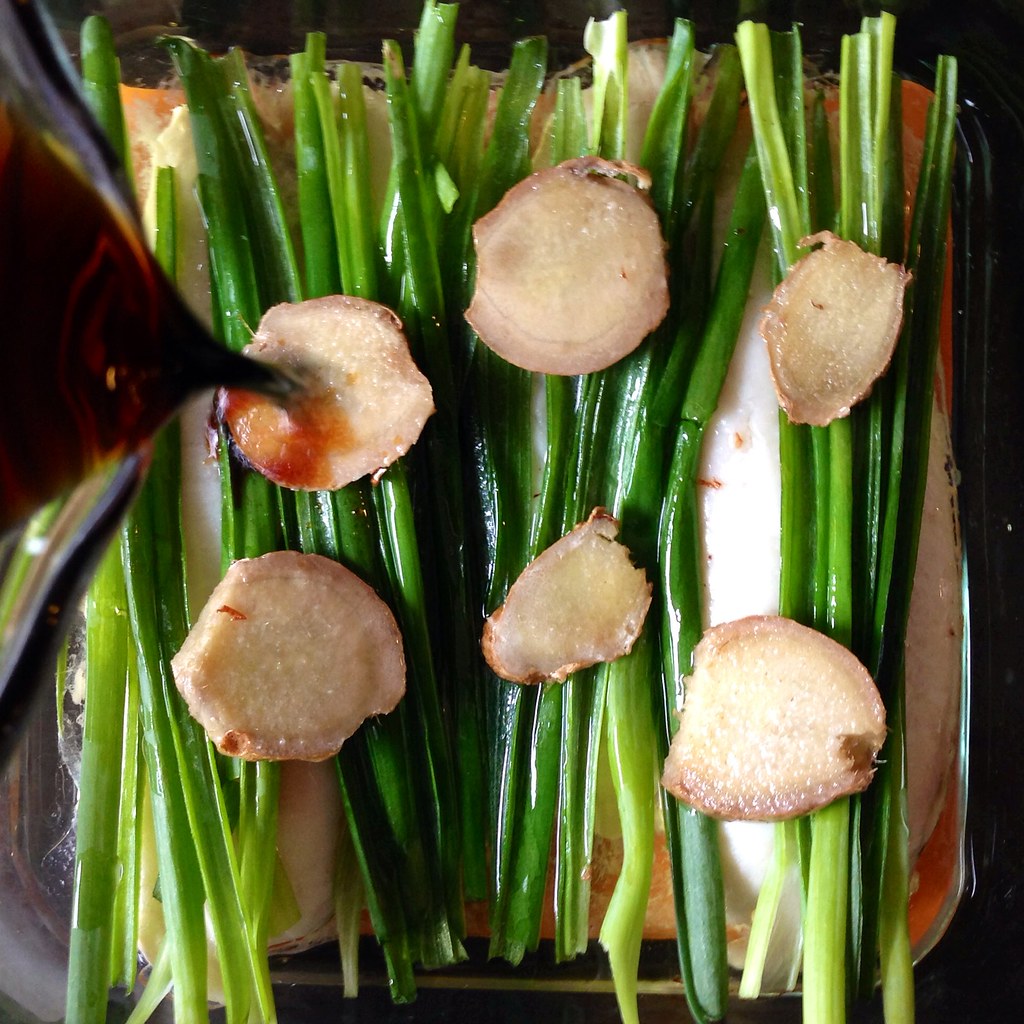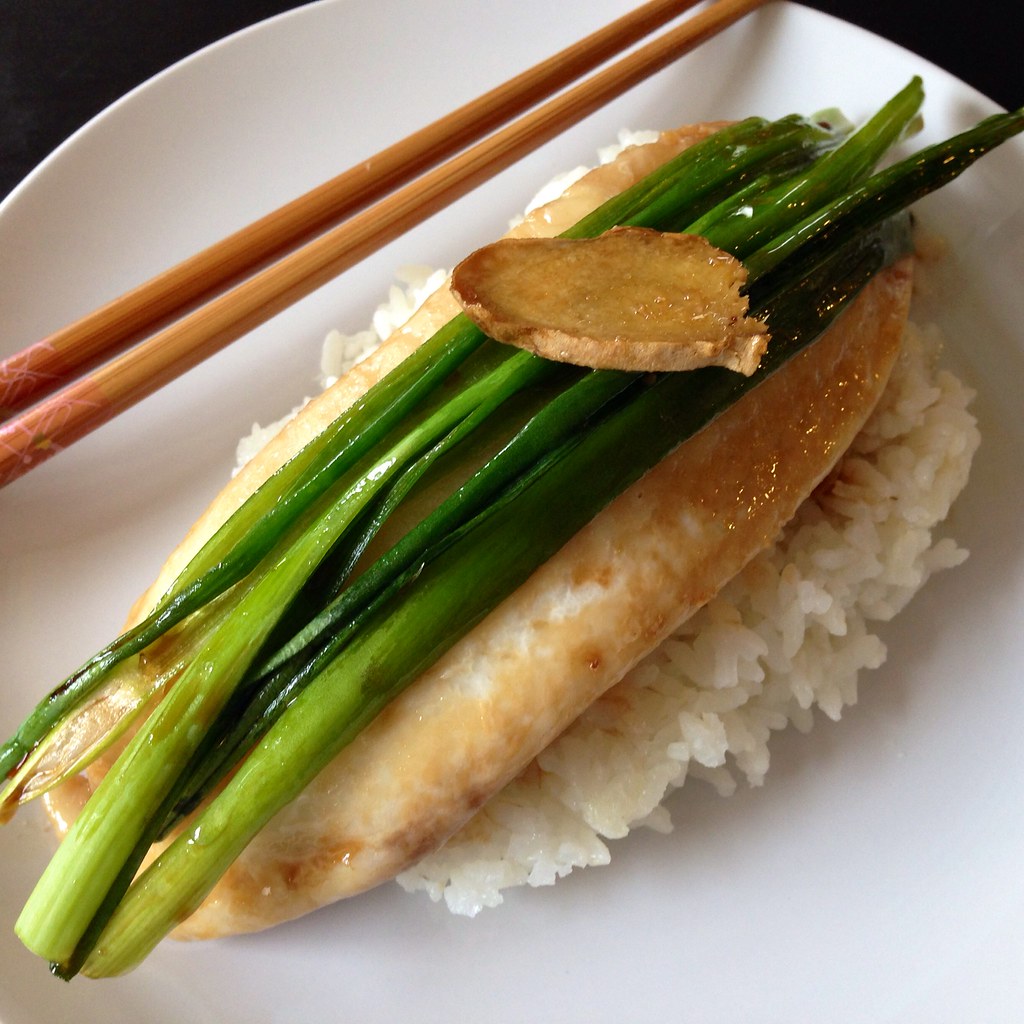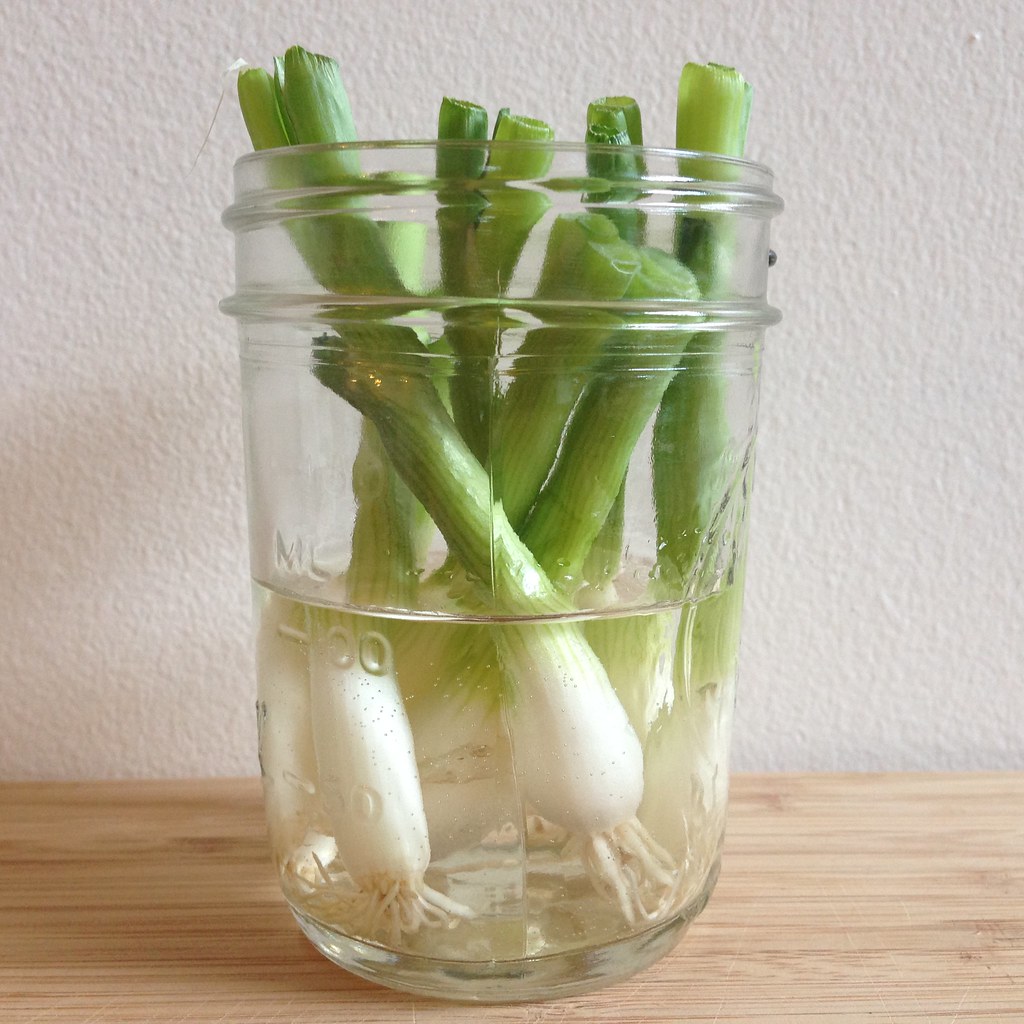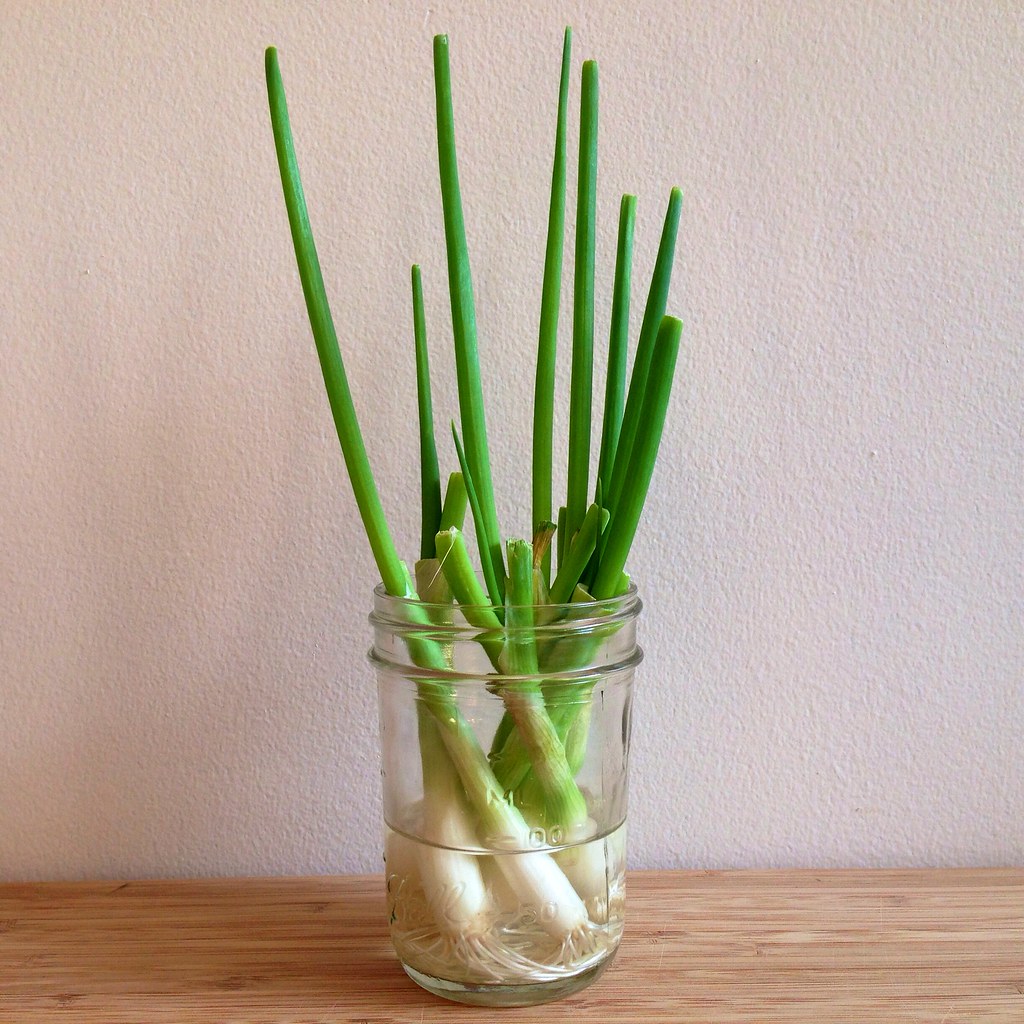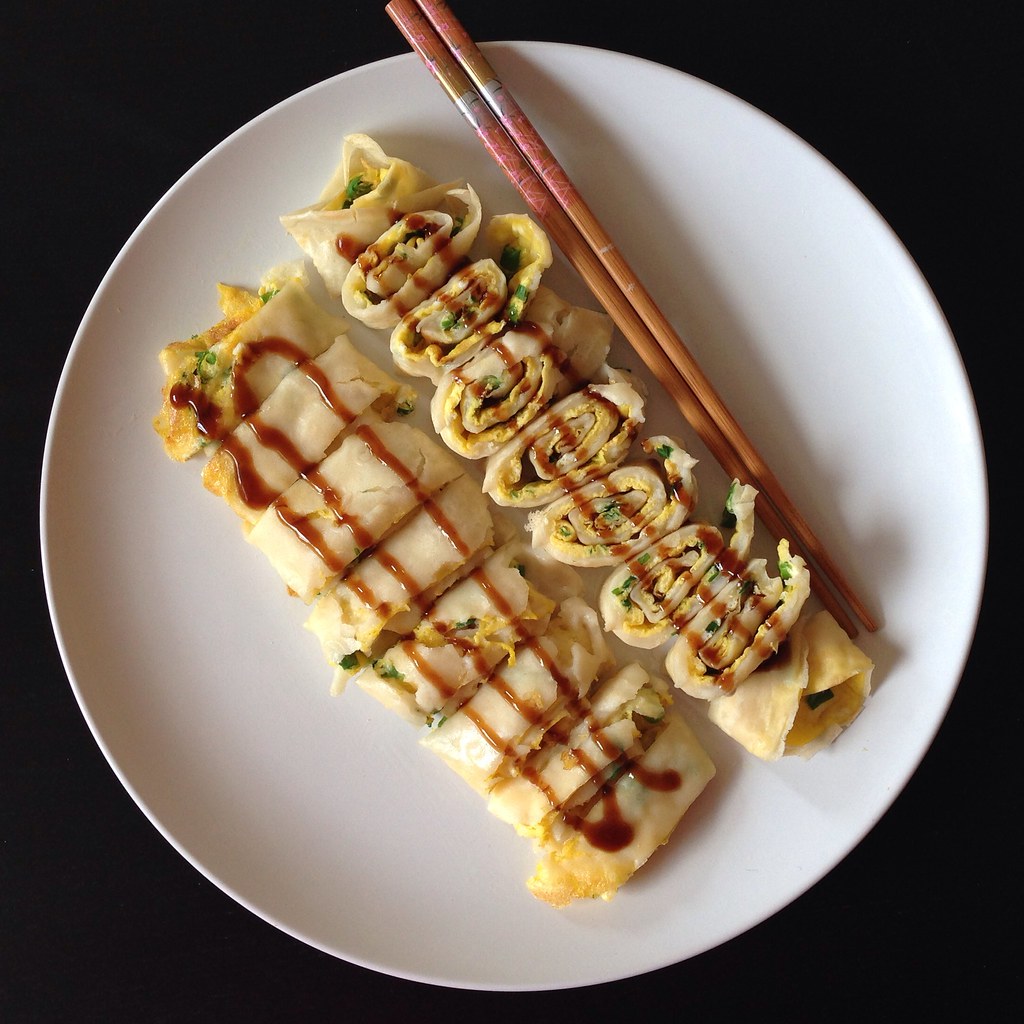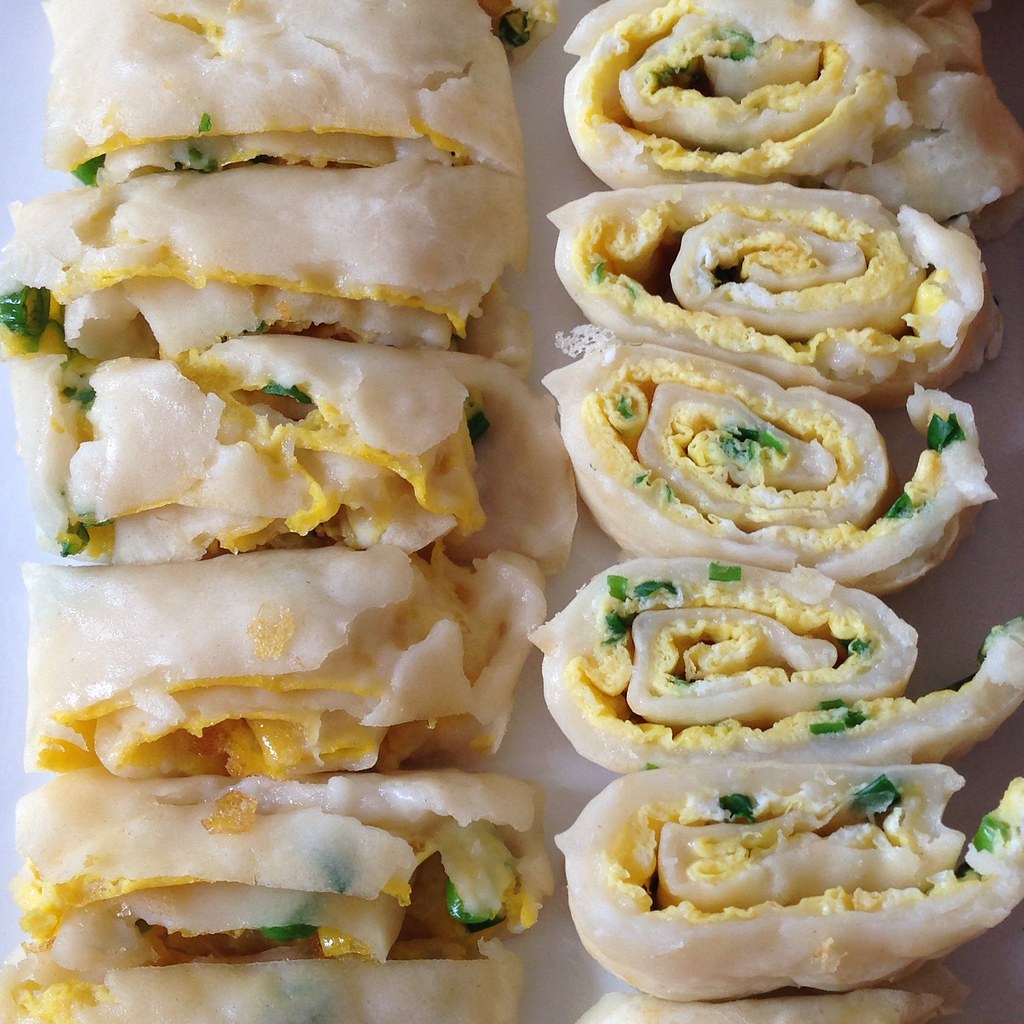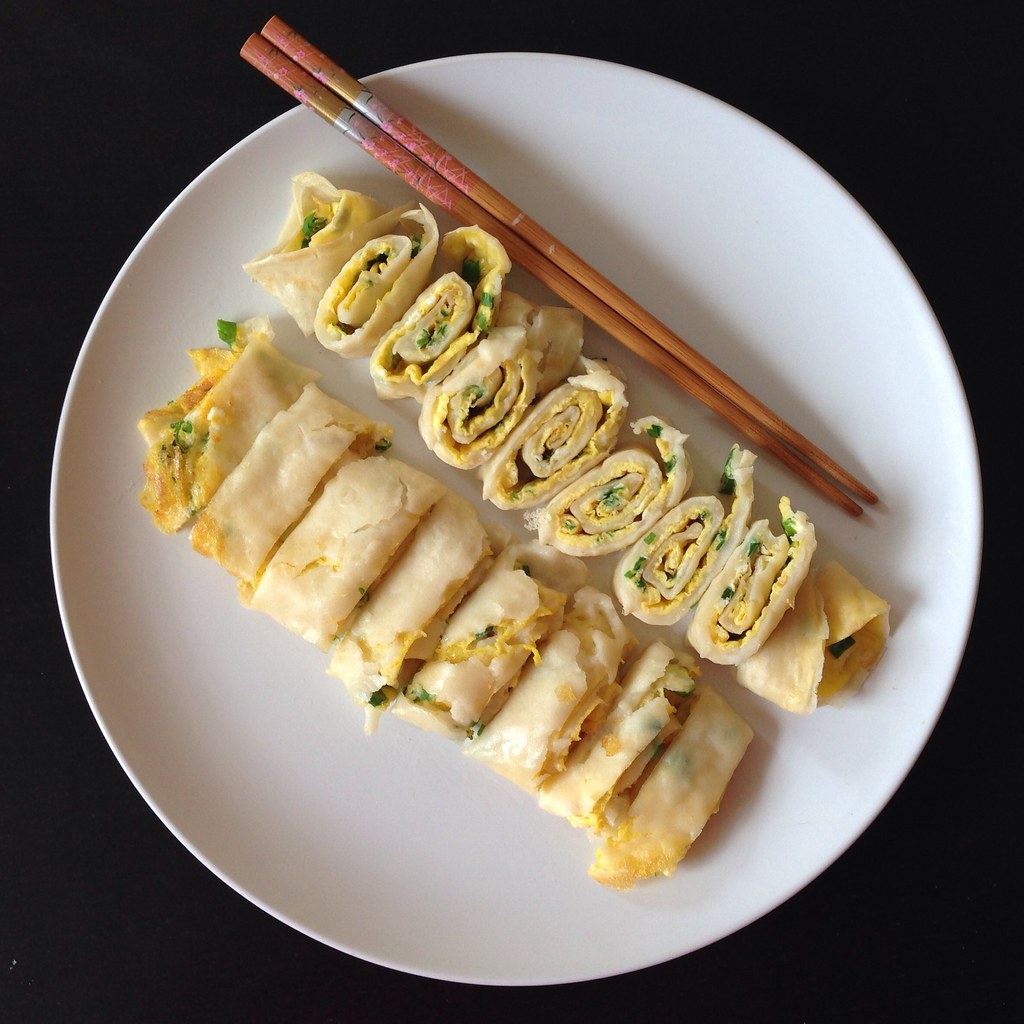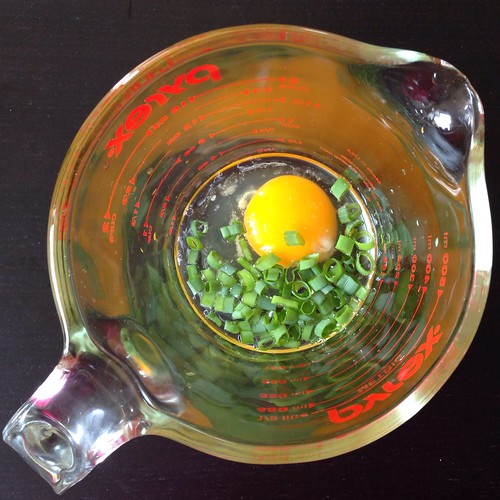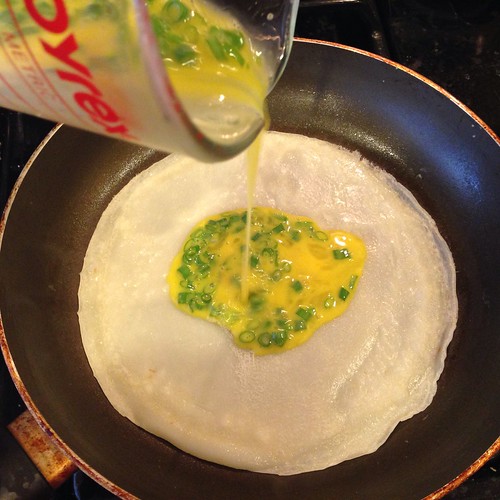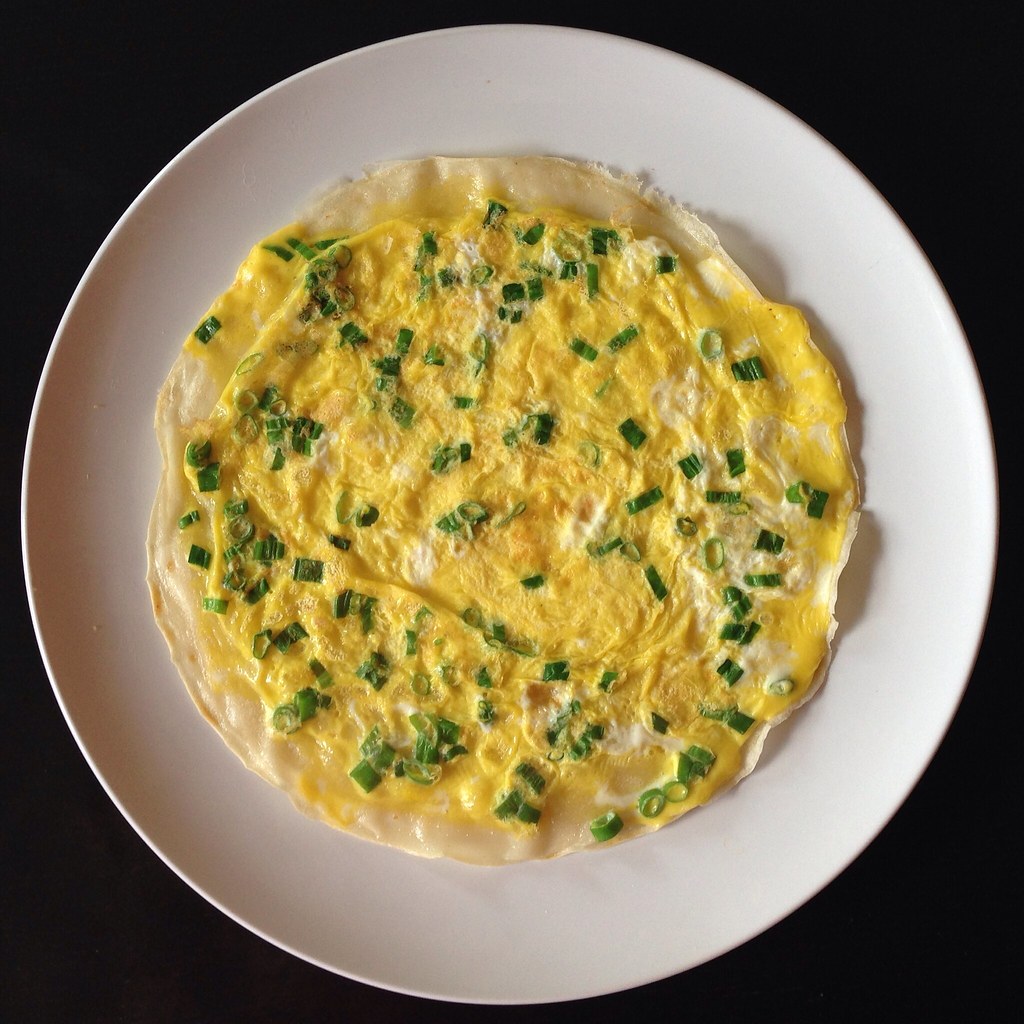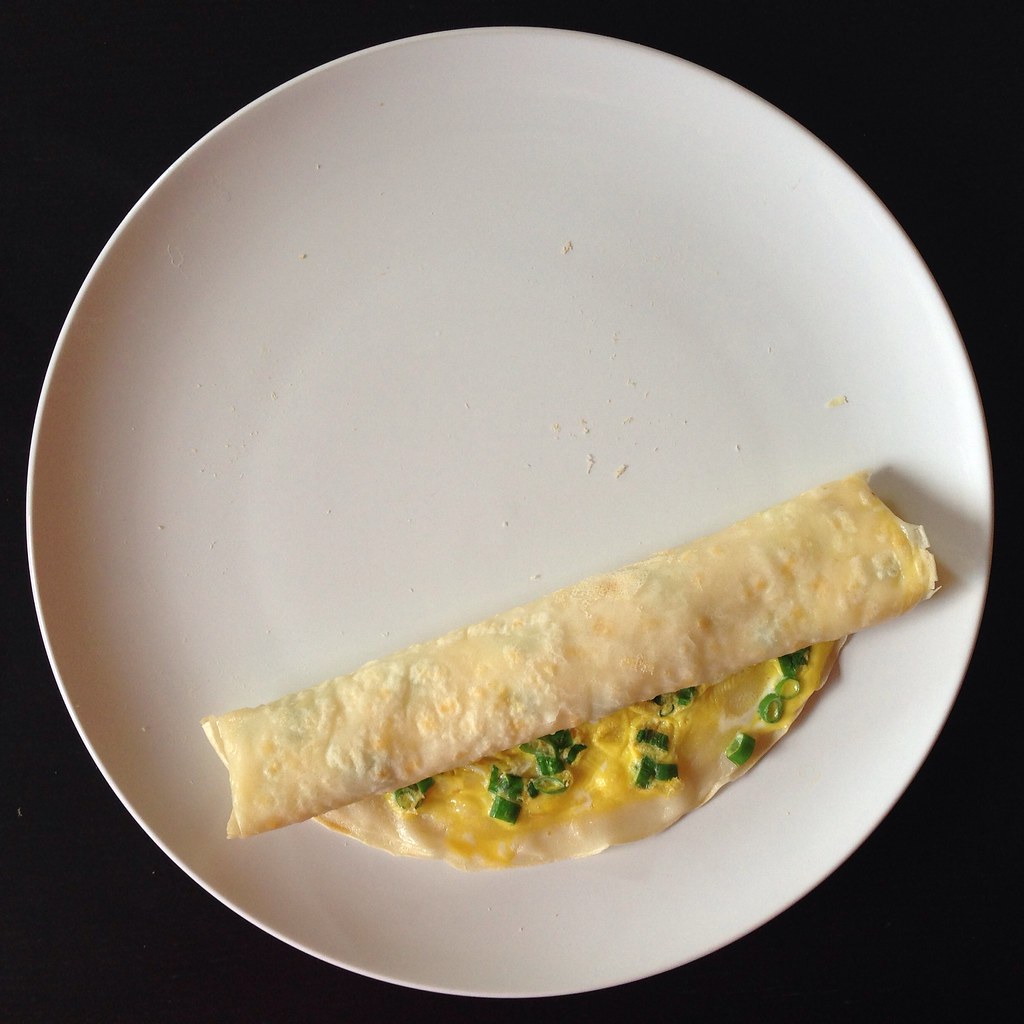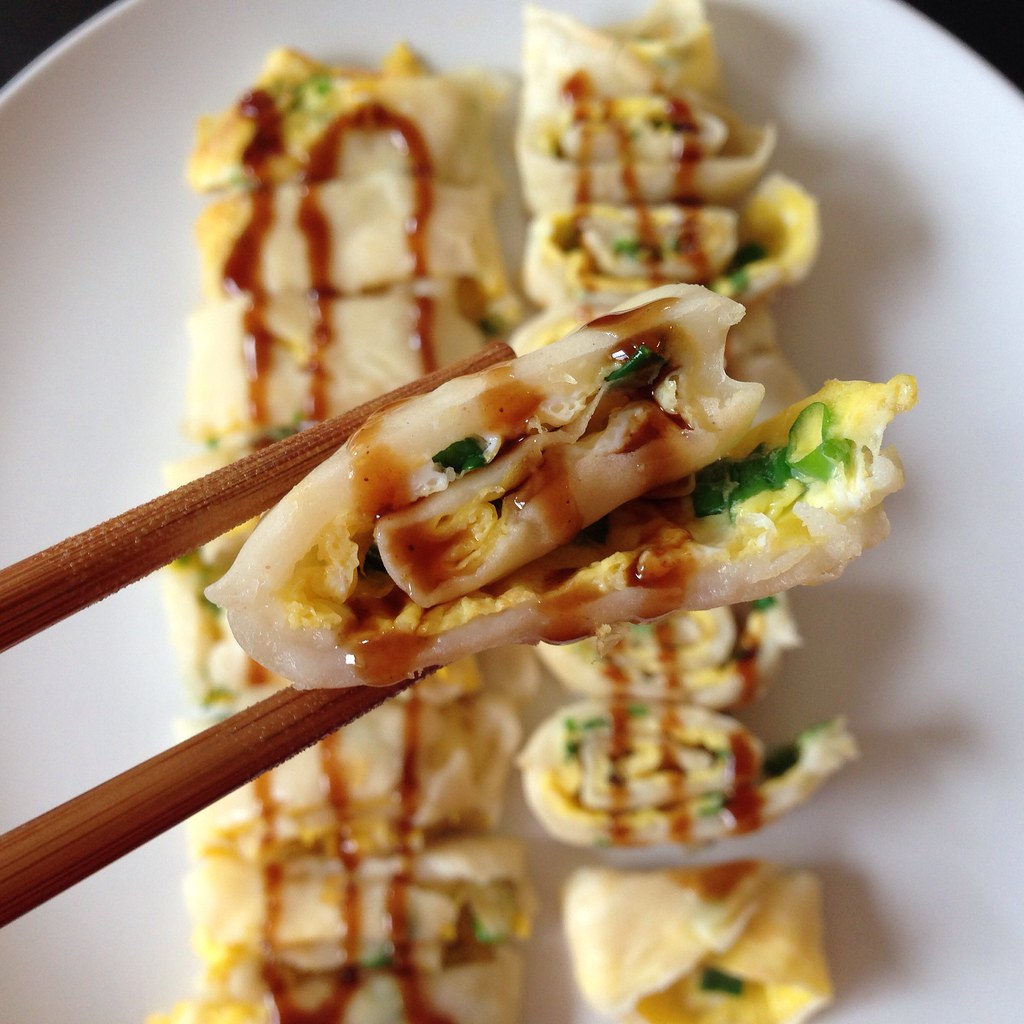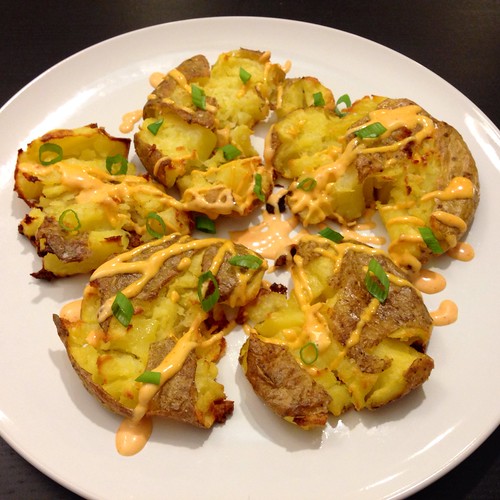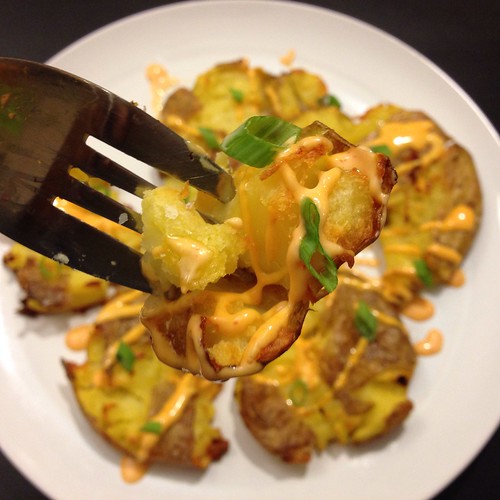Showing posts with label scallions. Show all posts
Showing posts with label scallions. Show all posts
Sunday, December 30, 2018
Bacon Fat Scallion Pancakes
I've been making scallion pancakes the same way for years using a recipe I got from one of my chef friends, but recently I tried a different recipe based on a recommendation from the same friend and discovered this one makes just as good, if not better scallion pancakes in a lot less time!
One of the main ingredients for the recipe she sent me was lard, but since I don't usually have that in stock, I tried substituting with bacon fat. I'm surprised no one else came up with this combo before because it's basically combining two of the greatest tasting things in the world into one. I fiddled around with the other ingredients a bit to balance out the extra flavor from the bacon fat and ended up with this recipe. I think it's flavorful enough to not need a dipping sauce, but if you really want one, you can mix up some soy sauce, rice wine vinegar, sesame oil, and hot sauce to your liking.
Bacon Fat Scallion Pancakes
makes 5 pancakes
300 gram all-purpose flour
6 grams kosher salt, divided
10 grams sugar
175 grams warm water
30 grams chopped scallions (about the amount from 1 bunch of scallions)
50 grams bacon fat, melted
Vegetable oil for frying
Mix the flour, 2 grams of salt, sugar, and warm water together and knead for 5 minutes until it forms a cohesive ball of dough. Cover and let rest for 30 minutes at room temperature.
In the meantime, chop the scallions, melt the bacon fat, and measure out the remaining 4 grams of salt.
Divide the dough into 5 equal portions (I like to use the scale for this). Roll out one of the portions into a rectangle. Flip the dough occasionally to prevent it from sticking to the work surface. When it won't get any thinner with a rolling pin, gently stretch the dough out with your hands to get it even thinner, but stop if the dough starts to rip.
Spoon a fifth of the melted bacon fat on top of the dough and spread it all around with the back of the spoon. Sprinkle a large pinch and a half of salt all over and then do the same with a fifth of the chopped scallions.
Starting from the long edge, roll up the dough to form a long rope. Don't worry about making a tight coil; focus on making the dough as thin as possible by continuing to gently stretch it out as you roll it up. Once you've formed a long rope, coil it up into a spiral with the seam side down and tuck the end underneath. Use your palm to squash the coil into a flatter disc. Set aside and repeat with the other 4 pieces of dough.
Heat up a frying pan over medium high heat with enough oil to generously coat the bottom. If you have any leftover bacon fat you can add it to the oil. While the oil is heating, use your hands or a rolling pin to flatten one of the discs even more. Aim for the pancake to be a little less than 1/4" thick, but don't flatten it completely or else you'll lose all the layers.
Fry the pancake until golden brown on one side and flip. It's okay if you need to flip it a few times to get it evenly browned on both sides. While you're waiting for it to cook, go ahead and flatten the next pancake. When the pancake is done, transfer it to a wire rack. Make sure you have enough oil left in the pan and fry the next one.
If you have any leftovers, I like to quarter and freeze them so that I can use my compact air fryer to reheat them.
Next: Mochi Waffles
Previously: My Communion Bread
Last Year: Pork, Cabbage, and Tofu Dumplings
Two Years Ago: Cranberry Curd Tart
Four Years Ago: Puppy Chow Pie
Five Years Ago: Miso Pumpkin Soup
Six Years Ago: Thomas Keller's Lemon Tart
Nine Years Ago: Tim Tam Slam Ice Cream
Ten Years Ago: Curry Turnovers
Monday, August 13, 2018
Tomato and Eggs over Rice (Updated)
When I first found out that the summer collaboration star ingredient was going to be tomatoes, I envisioned a really photogenic heirloom tomato pizza or shakshuka, but the more I thought about it, the more my mind kept going back to this homely, homey dish. It will never win awards for its looks, but it's so incredibly easy to make and delicious that I thought it was worth dusting off from my archives and writing up again.
The thing is, after making this over the many years, it's become one of the few dishes I can make without consulting a recipe. So I figured I'd write it the way I make it. If you really need to follow one (at least the first few times), check out my old post about it. But I bet you'll be making this so many times that eventually you'll be able to make it like I do!
Tomato and Eggs over Rice
serves 1 hungry girl or 2 as a side dish
1 large tomato or 2 smaller tomatoes, total volume about the size of your first
3 eggs (add a 4th egg if your tomatoes are really big; you want about an equal volume of tomato:egg)
Kosher salt, to taste
About a tablespoon chopped scallions (I usually just harvest a few stalks from the ones I have growing on my windowsill)
A splash of rice wine
Sesame oil
Cooking oil
A splash of rice wine vinegar
A pinch of sugar
About 1/2 teaspoon of cornstarch
Cooked rice
Crack the eggs into a bowl and add a few pinches of salt. Whisk with a fork until nicely beaten. Let sit while you prepare the tomatoes and scallions.
Chop the tomatoes into a small dice. Chop the scallions. Add a splash of rice wine and sesame oil to the eggs and whisk again.
Heat a non-stick pan over medium heat and add some oil. When the oil is hot, add the beaten eggs and scramble into large curds. When the eggs are 90% cooked, transfer back to the small bowl.
Add a bit more oil to the pan and heat again. Add the chopped tomatoes, a splash of rice wine vinegar, a pinch of sugar, and a larger pinch of salt. Cook for a minute, then add the chopped scallions.
Add a tablespoon of water to the cornstarch to make a slurry and then add to the tomatoes. Stir until the liquid thickens, then add the eggs back into the pan. Cook until well combined and serve immediately over rice.
Check out the #wesaytomatoes hashtag on Instagram to see the rest of the collaborations!
Next: My Communion Bread
Previously: Cherry Pit Ice Cream with Cherry Ripple and Brown Butter Streusel
Two Years Ago: Zucchini Pizza
Four Years: Grace's Ginger Scallion Fish
Five Years Ago: S'mores Brownie Ice Cream Sandwiches
Wednesday, December 6, 2017
My Mom's Steamed Bao Buns
I first wrote up my mom's hua juan recipe almost 9 years ago so I figured it's time to give a little update. You can use this recipe to make regular steamed mantou, or fill them to make different types of baozi, but my favorite is still hua juan, which is just the regular bao dough with a sesame-scallion glaze twisted into a flower shape.
I recently came across this new way to shape bread called a Winston knot. There aren't many videos of how to make it online, and the one I used wasn't even that good, but once you get the idea it's pretty easy. You can make it with two single strips or two double strips like I did here. I think the most popular one I've seen is with two triple strips; the resulting bun looks like a volleyball!
The first step is to make an X with the strips.
Then you'll cross one half of the bottom strip over.
Now take the strip that's on the bottom of this picture and weave it through the other 3 strips.
Continue taking the strip on the bottom (or on the right after rotating 90 degrees) and weaving it through the other 3 strips.
When you run out of dough to weave, smush the ends all together.
Then roll the braid up into a ball with the smushed end on the inside.
That's it! For these buns I decided to apply the sesame-scallion glaze only on the inside of the bun so the outside would stay immaculately white.
My Mom's Steamed Bao Buns
makes 12 buns
A heaping teaspoon of active dry yeast
1 cup milk, warmed to 100-110°F
3 cups all-purpose flour
6 tablespoons of sugar
1/4 cup vegetable oil
Turn the oven on to the lowest setting (mine is 170°F).
Dissolve the yeast in the warm milk. If you don't have a thermometer, the milk should feel a little warmer than a fever.
Combine the flour and sugar, then add the milk mixture and oil. Mix together until a dough forms and knead a few minutes until smooth. Cover the bowl and place in the oven. Turn off the heat and let the dough proof for an hour or until doubled.
Once the dough has doubled, remove from the oven and turn the oven on again to the lowest setting. Punch the dough down and knead a few more times. Divide into twelve equal pieces (I divide in half twice and then divide each quarter into thirds). Shape and fill the dough at this point if desired. Place each bun on a square of parchment paper. Cover and place in the oven, turning off the oven again. Let proof another 40-60 minutes.
Steam the buns for 13 minutes. I use my stockpot with the pasta insert as one level and the steamer insert as a second level so I can steam 6 at a time.
If not eating immediately, freeze and reheat in the microwave before eating.
Next: Pork, Cabbage, and Tofu Dumplings
Previously: Slow-Roasted Ginger Scallion Salmon
Last Year: Cranberry Curd Tart
Three Years Ago: Puppy Chow Pie
Four Years Ago: Thai Coconut Sticky Rice with Mango
Five Years Ago: Vanilla Passion Caramels
Eight Years Ago: Wah Guay (Taiwanese Rice Cake with Meat Sauce)
Nine Years Ago: Beef Noodle Soup and Lu Dan
Thursday, November 30, 2017
Slow-Roasted Ginger Scallion Salmon
I was first introduced to slow-roasted salmon when the Food52 Cookbook Club was going through Samin Nosrat's Salt Fat Acid Heat back in September. I tried the citrus version with lemon vinaigrette first and was absolutely smitten. As incredible as the citrus and vinaigrette were, I think it was the salt and slow-roasting that made the dish truly exceptional. It made a regular farm-raised salmon filet taste like a wild-caught Copper River King salmon! The salmon was moist, rich, and buttery without being slimy or fishy. I also tried her soy-glazed version, and it turned out amazing as well, but having to baste the fillet every 15 minutes was kind of too fussy for me.
I decided I needed to combine the recipe for Grace's ginger scallion fish with this method of cooking salmon and found some friends who were interested in testing out the recipe. I also found some friends who had poor reading comprehension and thought I was offering them free food, haha.
We tested roasting the salmon with the skin side up, down, and skinless, and I found that skin side down worked the best. The skin shielded the fish from too much heat from below, and this version produced the least dry fillet. The skin never really gets crispy, though, so unless you enjoy rubbery skin, I wouldn't serve that part.
Also, the reason I wrote that the salmon should be straight from the fridge is because some people were using frozen salmon which they let thaw on their counter before using. Their salmon came out overdone in the time frame I gave so, if you are also making this with warmer-than-refrigerator salmon, reduce the time in the oven accordingly.
Slow-Roasted Ginger Scallion Salmon
1 lb. salmon fillet, straight from the fridge
2 tablespoons sugar
4 tablespoons soy sauce
2 tablespoons rice wine (if you don't have any, just use more water)
2 tablespoons water
1 bunch scallions (about 6 oz.), green parts only
1-2 inch knob of fresh ginger, thinly sliced
Kosher salt
Vegetable oil
Preheat the oven to 225°F.
Combine the sugar, soy sauce, rice wine, and water and heat for 1 minutes in the microwave. Stir to dissolve the sugar.
Line a small baking dish with the scallions and ginger and place salmon on top, skin side down. Season the salmon liberally with kosher salt and coat with oil. Pour the soy sauce mixture over the fish and roast the salmon for about 40-50 minutes, or until a thermometer stuck into the thickest part reads 110-120°F.
The fish should still look a lot like how it did when it went in (i.e. almost translucent), so if you don't have a thermometer, check for doneness by poking the thickest part; it will start to flake once it is ready.
Serve with rice and spoon some of the sauce on top for extra saucy goodness.
Next: My Mom's Steamed Bao Buns
Previously: Deep Fried Apple Dumplings with Miso Caramel Dipping Sauce
Last Year: Pear Apple Cranberry Slab Pie
Two Years Ago: Pad Thai
Three Years Ago: Raindrop Cake
Four Years Ago: My Mom's Taiwanese Sticky Rice
Five Years Ago: Grapefruit Pie
Eight Years Ago: Nanaimo Bars
Nine Years Ago: Homemade Crystallized Ginger
Monday, December 19, 2016
Pull-Apart Scallion Swirly Bread
This is another post that started with a picture on Instagram. I saw Sarah Jampel's picture of kubaneh from the Breaking Breads cookbook and was utterly transfixed. Then it showed up again on the Food52 feed in a picture for their store's twine holder, but all anyone wanted to know was what the beautiful, crazy, swirly bread was on the right. I managed to track down the recipe from my library's copy of Breaking Breads and tried it without even knowing what it was supposed to taste like.
The original was a bit too salty for my liking, but the picture above garnered the most likes I've ever gotten for an Instagram post! I decided to take a cue from Molly Yeh's scallion pancake challah bread and try a hua juan version of kubaneh by brushing a mixture of scallions and sesame oil on the dough before rolling it up. I also used a fresher yeast this time, and the results are pretty spectacular if I do say so myself.
The bread itself reminds me a lot of milk bread in that it's slightly sweet and very soft, yet the parts that get browned turn out a little crunchy from all the butter! And even though you just apply a small smear of the sesame-scallion filling, it's so fragrant that the flavor gets infused throughout the whole roll. It's definitely better when warm, so if you're eating it a day or two later, microwave it for 10-20 seconds to rewarm it.
Pull-Apart Scallion Swirly Bread (adapted from Breaking Breads)
makes 16 rolls
For the bread dough:
1 1/4 cups water
1 packet (about 2 1/4 teaspoons) active dry yeast
4 cups all purpose flour
1/4 cup sugar
1 tablespoon kosher salt
1 stick butter, very soft
For the filling:
1 tablespoon toasted sesame oil
1/4 cup finely chopped scallions
1/2 teaspoon kosher salt
1/4 teaspoon sugar
Sprinkle the yeast over the water in a stand mixer bowl and allow to dissolve. Mix the flour, sugar, and salt in a separate bowl, then add to the yeast and water.
Use the dough hook on low to combine the ingredients, then mix on medium-high until the dough comes away from the bowl cleanly. Give the dough a few folds to form a nice, tight ball. Cover the bowl and let rise until almost doubled, about 30 minutes.
Lightly butter a large plate (I usually use the butter wrapper to do this). Divide the dough into 8 pieces, shape each into a tight ball, and place on the plate. Cover and let rise for another 30 minutes.
Mix the sesame oil, scallions, salt, and sugar in a small bowl. Generously grease a 9" springform pan with the softened butter.
Use about a tablespoon of the butter to generously grease a clean 11" x 17" rimmed baking sheet. Place one of the balls of dough on the baking sheet, smear a little more butter on top, and start pressing it out to cover almost the entire sheet. Sprinkle some of the scallion filling across the middle lengthwise third of the dough. Fold the top third of the dough down and then the bottom third up (like a business letter fold, but lengthwise). Roll the dough up into a tight spiral and cut in half. Place the cut sides up in the buttered pan. Repeat with the remaining balls of dough. Cover the bottom of the pan with a large piece of aluminum foil or place in another pan to catch any melted butter that leaks out. Cover the pan and let the dough rise a final time for 45 minutes.
Preheat the oven to 350°F. Bake the bread for 15 minutes, then turn the heat down to 325°F. Bake for another 30-40 minutes, or until the tops are golden brown. If there is any butter left, melt it and add it to any remaining filling mixture and brush on top of the rolls. Serve warm.
Next: Chocolate Babka
Previously: Cranberry Curd Tart
Two Years Ago: Puppy Chow Pie
Three Years Ago: Miso Pumpkin Soup
Four Years Ago: Homemade Ramen Noodles
Seven Years Ago: Tim Tam Slam Ice Cream
Eight Years Ago: Pork and Cabbage Dumplings
Wednesday, June 10, 2015
Garlic Naan
What's the point in making tikka masala if you don't have any naan to swipe up the leftover sauce? If I had known how easy it was to make naan on the stovetop, I would've made it a long time ago! Since I had some garlic and scallions lying around, I decided to make the garlic version, which let's face it, is so much better than the plain version.
I found the dough to be on the wetter side, so make sure you work it on a floured surface and use a floured rolling pin or else it'll end up sticking everywhere and to everything. Sadly, naan does not keep well so I would suggest eating it the same day it is made.
Garlic Naan (adapted from Saveur)
makes 4 pieces
6 tablespoons water heated to 115°F
1/2 teaspoon honey
1 heaping teaspoon active dry yeast
1 cup all-purpose flour
1⁄4 cup plain, full-fat Greek yogurt
1 tablespoon canola oil
1⁄4 teaspoon kosher salt, plus more for sprinkling
1 tablespoon minced garlic
1 tablespoon chopped scallions
Melted ghee or butter, for brushing
Stir water and honey in a bowl. Add the yeast and let sit until foamy. Add the flour, yogurt, oil, and salt and stir until dough forms. Knead the dough in bowl until smooth, about 5 minutes. Cover and let sit in a warm place until doubled in size, about 1 hour.
Transfer dough to a floured work surface and divide into 4 balls. Working with 1 ball at a time and using a rolling pin, roll dough into a 7" circle about 1⁄4" thick. Sprinkle with garlic and scallions and press into dough.
Heat a 12" nonstick skillet over medium-high. Working with 1 piece dough at a time, cook dough, plain side down, until bubbles appear over the surface and brown spots appear on the bottom, about a minute. Flip the dough and cook until the bottom gets browned in spots as well. Transfer naan to a plate and brush with ghee. Sprinkle with more kosher salt and serve hot.
Next: Pasta con le Sarde
Previously: Tofu Tikka Masala
Last Year: Vegan Almond Joy Ice Cream and Bon Bons
Two Years Ago: Spaghetti Carbonara for One
Five Years Ago: Elote (Mexican Grilled Corn)
Six Years Ago: Black Sesame Ice Cream
Friday, August 1, 2014
Grace's Ginger Scallion Fish
One of my friends posted a picture of some steamed fish she made on Facebook, and it looked so good I had to ask for the recipe. Turns out the fish isn't so much steamed as baked in the oven, but it's so moist and tender, it might as well have been steamed!
First you bake the fish with some rice wine and ginger slices just until the fish is barely done. The ginger slices are then added to some oil being heated on the stove, and the fish is topped with scallions. Then comes my favorite part: you pour the ginger-infused hot oil over the scallions and fish to seal in moisture and flavor. Finally a sweet soy based sauce is poured over everything. This is great served over steamed rice, and in my opinion, is even better the next day when the fish has absorbed some of the sauce!
Grace's Ginger Scallion Fish
serves 2-4
1-2 lbs. white fish filets (I've used cod and tilapia, but I bet sole, flounder, and orange roughy would work well, too)
5 tablespoons rice wine, divided
2 inch ginger root, thinly sliced
1/4 cup vegetable oil
1 bunch scallions, green parts only
6 tablespoons soy sauce
4 tablespoons sugar
5 tablespoons water
Preheat the oven to 400°F.
Place the fish filets in a small baking pan. Sprinkle 2 tablespoons of rice wine over the fish and then arrange the ginger slices on top. Bake for 12 minutes or until the fish is just cooked through (do not overcook).
Meanwhile, heat up the oil in a small saucepan over medium low. Mix the remaining 3 tablespoons of rice wine with the soy sauce, sugar, and water and heat for 1 minute in the microwave. Stir to dissolve the sugar.
Slice the scallions in half lengthwise or julienne, if you can be bothered.
When the fish is done, remove the ginger slices and transfer to the hot oil. Arrange the scallion on top of the fish.
Bring the heat up on the oil to medium high and cook until the ginger just starts to brown. Immediately pour the hot oil onto the fish. (It's okay with the ginger falls out.)
Pour the soy sauce mixture over the fish and serve warm with rice.
Pro-tip: Don't throw out the scallion roots after you've chopped off the green part! Put them in some water and leave them in a sunny place.
They'll start regrowing, and you can get a lot more mileage out of them. The picture below shows how much they grew in only 5 days! That's enough to make some tomato and eggs over rice. =)
Next: Jacques Genin's Mango Passion Caramels
Previously: Strawberry Pop Tart Slab Pie
Last Year: Cold Soba Noodle Salad with Bake Tofu and Edamame, S'mores Brownie Ice Cream Sandwiches
Monday, March 24, 2014
Dan Bing (Taiwanese Egg Crepe)
I've been traveling for work a lot recently, and while I definitely can't complain about being able to expense all my meals, sometimes I just want something simple. Comforting. That I made myself. This morning I woke up and had a craving for dan bing, a Taiwanese breakfast dish that's basically a thin crepe with an egg on top. I used to buy it all the time from street vendors when I lived in Taiwan, but I'd never tried to make it myself.
A quick Google search brought me to this translation of a Taiwanese recipe. I took one of the commenter's suggestion and added some sesame oil to the egg mixture. It's a good thing the recipe was for 3 crepes because I needed 3 tries to get a good one.
On my first try, when I tried to flip the crepe, it was so soft that it just collapsed into a sticky mess on the pan. The second time, instead of trying to flip with a spatula, I just dumped the crepe upside-down onto a plate and then slid it back onto the pan. It worked well enough but then I ended up overcooking the crepe so that it was too hard to roll up without cracking (above left). Finally, on the third try, I ended up with a pretty decent looking and tasting dan bing!
Dan Bing (Taiwanese Egg Crepe)
makes 3 crepes
1/2 cup bread flour
2 tablespoons corn starch
1 cup water
Salt
3 eggs
3/4 teaspoon sesame oil
3 heaping tablespoons chopped scallions
Soy paste and sweet chili sauce (optional)
Mix the bread flour and corn starch together in a small mixing bowl. Add the water and a pinch of salt and mix well. Let the batter rest for about 10 minutes while you assemble the rest of the ingredients.
For each crepe, beat 1 egg with 1/4 teaspoon of sesame oil, 1 tablespoon of water, a pinch of salt, and a heaping tablespoon of chopped scallions.
Start heating a non-stick pan on medium heat and lightly oil. Once the pan is hot, stir the batter again (it may have separated slightly) and add a third of the batter (about 1/2 cup) to the pan. Swirl the pan around to coat the bottom with a thin layer. Cook the crepe until the top is set and the edges pull easily away from the pan. Flip the crepe onto a plate and slide the crepe back onto the pan, cooked side up.
Pour the egg mixture on top of the crepe, and carefully spread it out with a spatula. Try not to have any of the egg go over the edge of the crepe if possible.
Continue cooking until the egg is mostly set and then flip (the crepe will be sturdy enough to flip with a spatula now). Cook for 10-20 seconds and then flip the crepe egg side up onto a plate or cutting board.
Quickly roll the crepe into a long, rectangular roll.
Cut into sections and serve hot with soy paste and/or sweet chili sauce.
Soy paste and sweet chili sauce are the more traditional sauces, but you can also try oyster sauce, hoisin sauce, or even ketchup. You can also eat this on the go by spreading the sauce on the egg before you roll it up and eating it like a wrap or burrito. Feel free to try different fillings in the egg mixture (e.g. chopped ham, crumbled bacon, corn) or on top of the cooked egg before rolling it up (e.g. shredded cheese, rou song [pork floss], cilantro), but I wouldn't put too much in because you want to make sure you can still roll it up easily.
Next: Nutella Mini Crepe Cakes
Previously: Miso-Glazed Eggplant
Four Years Ago: Duck Fat French Fries with Rosemary, Maldon Salt, and Truffle Oil
Five Years Ago: Cincinnati Chili
Friday, February 21, 2014
Hotter Crash Potatoes
I still make hot crash potatoes almost every time I get small, waxy potatoes from Boston Organics, but this time, I wanted something with a little more kick. So I made a quick sriracha mayonnaise and drizzled it on the finished potatoes along with a sprinkle of chopped scallions, and tada! Hotter crash potatoes!
I also took a suggestion from one of the comments in my original post to microwave the potatoes instead of boiling them first. The result is basically the same but in a quarter of the time!
Hotter Crash Potatoes
serves 2 as an appetizer
6 waxy potatoes
Vegetable oil
Kosher salt
2 tablespoons kewpie or regular mayonnaise
1/2 teaspoon sriracha sauce
1 tablespoon scallions, chopped
Preheat the oven to 450°F.
Place the potatoes in a microwave-safe bowl and cook for 5 minutes. Check for doneness; if a knife pierces through the potatoes easily, it's done. If not quite done, cook for another minute or two until done.
Line a sheet pan with aluminum foil or a Silpat. Drizzle generously with oil. Transfer the potatoes onto the oiled pan and smoosh with a potato masher or slotted spoon or large fork. Crowd the potatoes close to each other and carefully drizzle more oil on top, making sure that almost all the surfaces are covered with oil. Sprinkle with a few generous pinches of kosher salt.
Bake for 20-25 minutes until golden brown. In the meantime, mix the mayonnaise and sriracha sauce together to make sriracha mayonnaise.
When the potatoes are done, plate and drizzle with the sriracha mayonnaise. Garnish with a healthy sprinkle of chopped scallions. Serve warm.
Next: Mushroom Marsala Pizza
Previously: Okonomiyaki
Four Years Ago: Faux Momofuku Brussels Sprouts
Five Years Ago: Boston Cream Cupcakes
Labels:
boston organics,
mayonnaise,
potatoes,
scallions,
sriracha,
vegetarian
Subscribe to:
Posts (Atom)
